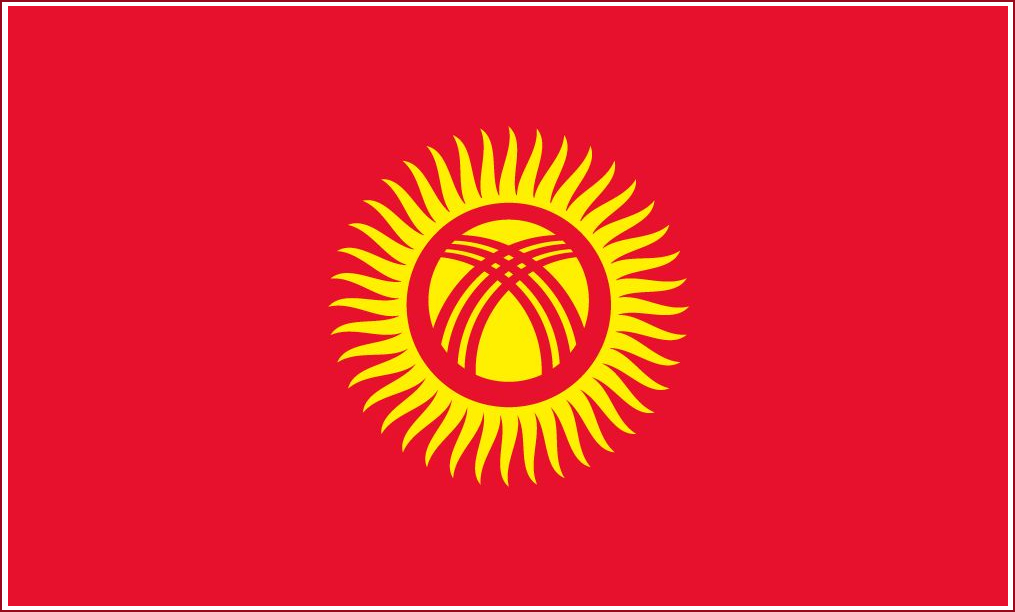
Almaty to Chong Kemin Valley, Kyrgystan – Sept. 19
ElderTreks brochure: After breakfast, we drive from Almaty to the Kazakhstan/ Kyrgyzstan border. Once we will clear immigration and customs formalities, we continue to the Chong-Kemin Valley. This evening experience true Kyrgyz hospitality with a traditional dinner in the Ashu Guest House. Overnight: Ashu Guest House, Kalmak-Ashuu village, Chong Kemin Valley.
Left Almaty, Kazakhstan, at 9 a.m. Arrived at our guest house in Chong Kemin Valley a little after 5 p.m.
Have really enjoyed the past few days, and the Kazak people as well. Really was “Very Nice”!
Lunch at a truck stop. My chicken noodle soup was super flavorful with shredded dark meat and dark brown skinny noodles. I must remember to make some that way instead of with white meat and cream-colored noodles.
Trucks used to have double license plates because of their poor quality. They are made of more durable material these days so not necessary but still required. Russia will often hire local Kazakh trucks with double plates so they don’t get fined.
Yellow pipes in the photos below are gas lines. Nowadays, they are being buried underground.
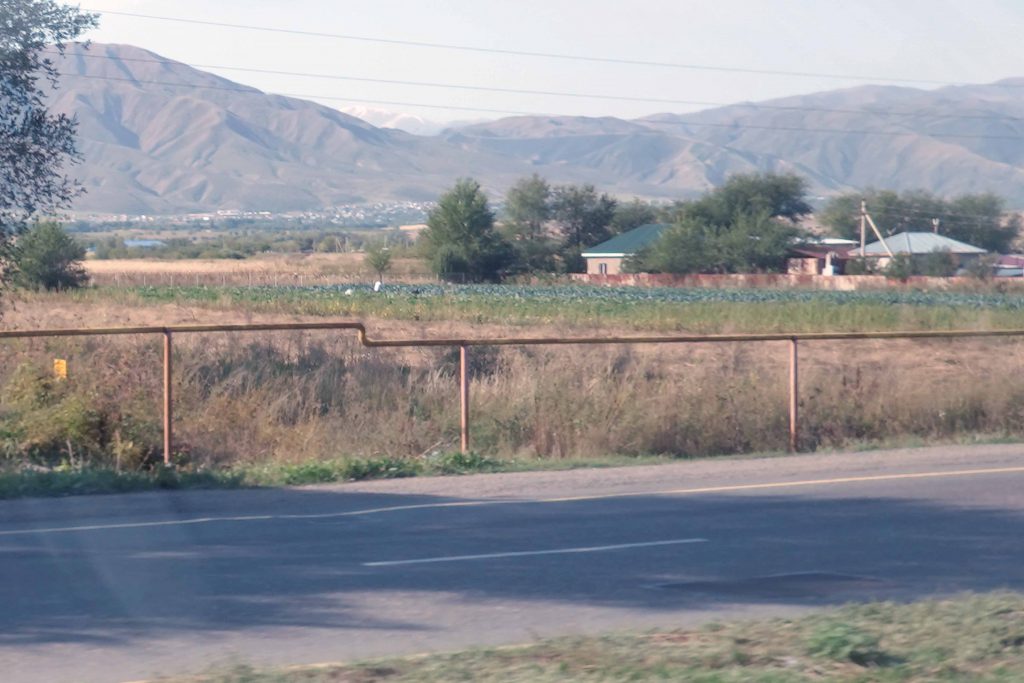
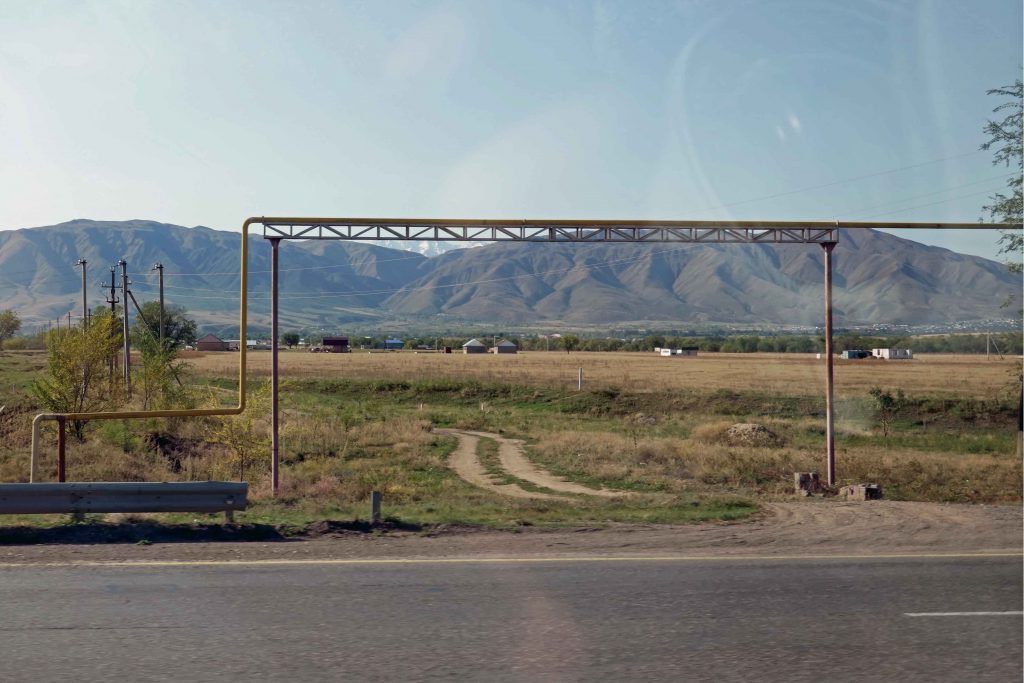
In the past, Muslim cemeteries used to be hidden away. If one sees a cemetery when driving, it is because the road was built after the cemetery was established.
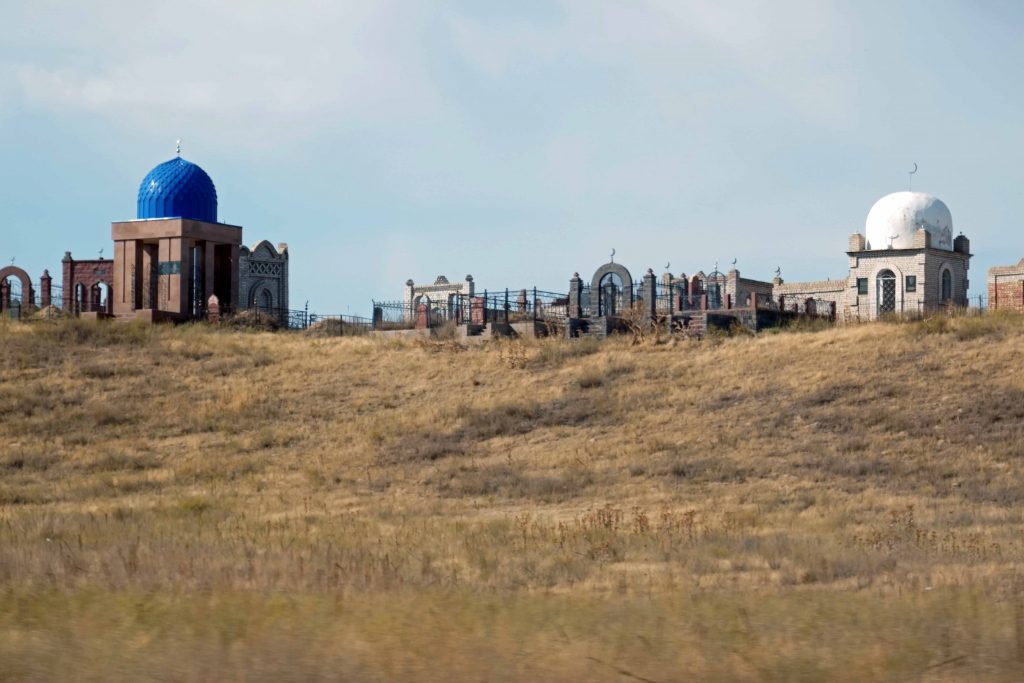
Midafternoon crossed into Kyrgyzstan (pronunciation, “Kurgistan”), locals called “Kurgs”. Both sides had pleasant staff and when they got to our group, it didn’t take very long at all. My oil painting got through safely and wasn’t confiscated!
At the truck stop after we crossed the border, Leroy said of all the stinky fly-infested potties around the world he’s used, this was the most disgusting ever. The one at the truck stop in Egypt on our way to the White Desert had been the winner up until now.
When Trish and Elaine got to the front of their line and saw only a couple of squatty potties, they decided to join the longer line in the convenience store where they found a western toilet, an attendant, it was clean, and had running hot water.
The Ashu Guest House we’re staying at is picturesque.
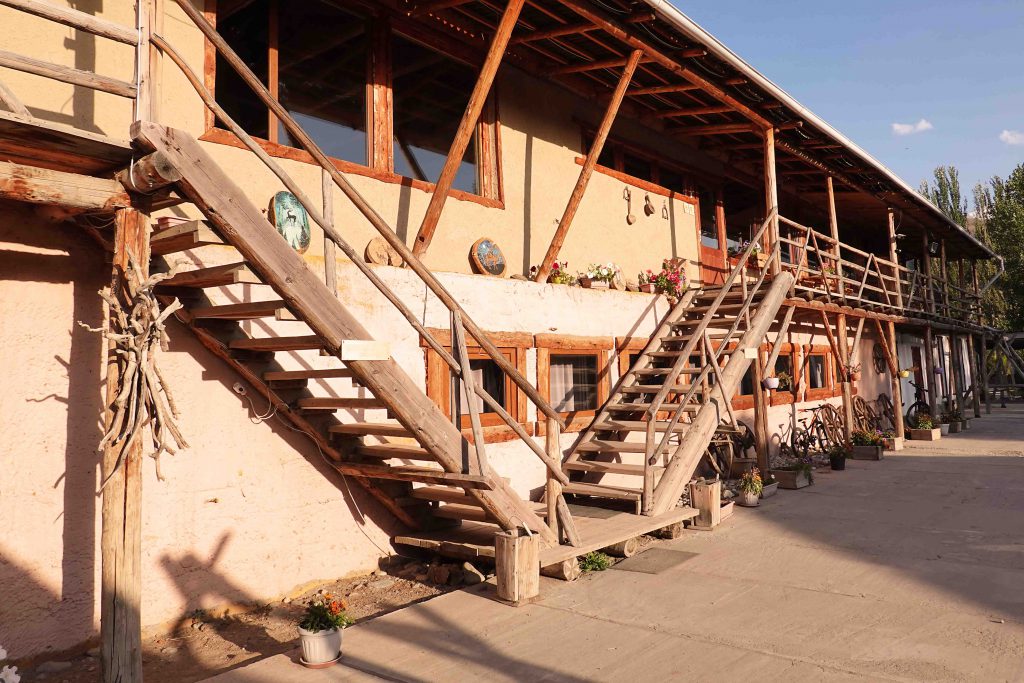
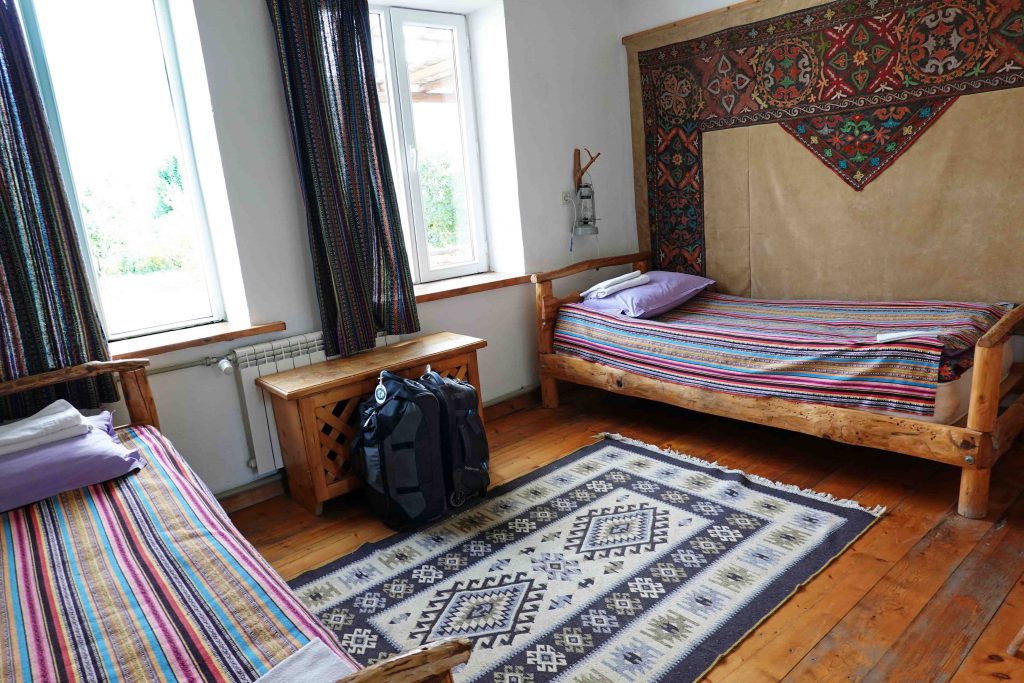
Only drawback I can see is nowhere to put our toiletries in the bathroom. There is a small area on the side of the pedestal sink to hold the toothpaste; I always make sure to put a tissue over the faucet to remind me not to use the water when cleaning my teeth. No exhaust fan in there, either–poor Leroy! In the common area there is extra TP and bottles of water if we need any and two hairdryers for guests to use and return.
At dinner, the bread was warm, freshly baked, tender and delicious, the butter was good tasting and the locally made raspberry jam to die for. I pretty much made my meal from that! Had some soup, passed on the goulash and mashed potatoes, and enjoyed birthday cake for dessert. It was similar to the Milkmaiden cake but with a delicate coffee flavor. After dinner, three girls did some traditional dances for us, most enjoyable, and really pretty outfits.

Chong Kemin Valley – Sept. 20
ElderTreks brochure: Today we will have the opportunity to visit an old soviet farm (kolkhoz) village and enjoy a short hike in the Valley. After lunch we will see a performance of a Kyrgyz horse show and in the evening experience true Kyrgyz hospitality with a traditional brandy and vodka party. Overnight Ashu Guest House, Ashuu Village, Chong Kemin Valley.
Leroy called the hike this morning,”A cr*p walk.” Spent more time dodging horse manure than looking at the scenery. Trish did get a photo she thought fun…she teased Roger, our group leader, she was going say this was our hotel and transportation:
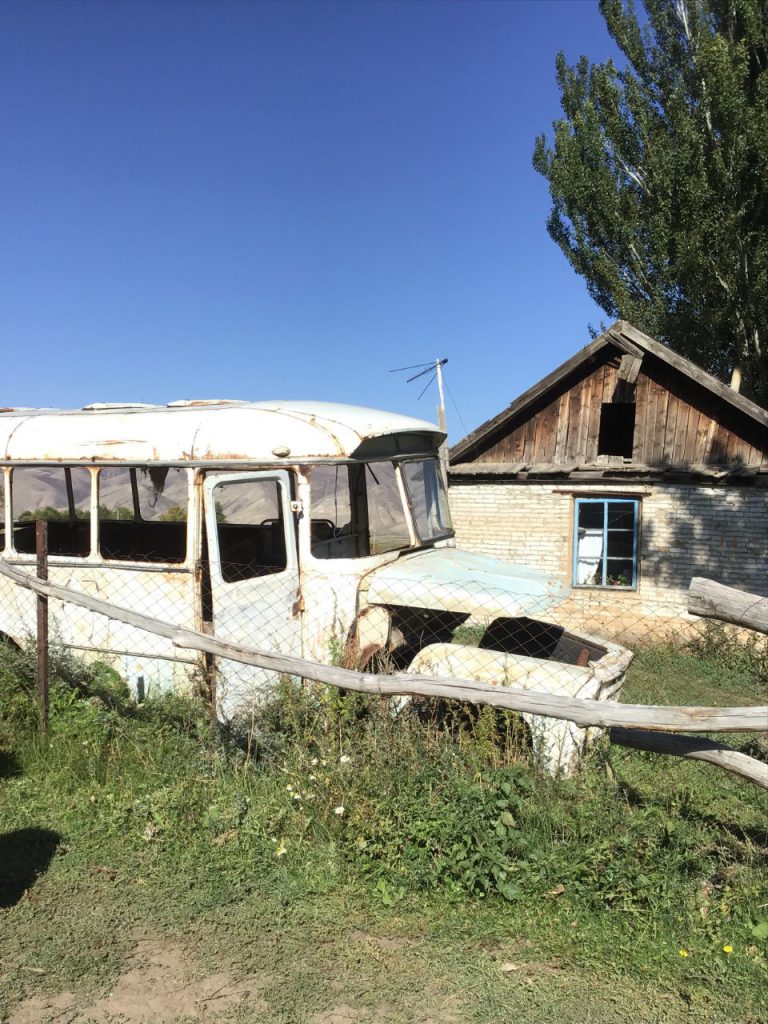
Visited a local private school this afternoon, they have about 150 students from kindergarten on up. Happy, polite children in a good looking school. We visited several classrooms, in one the students introduced themselves and said what they wanted to do when going out into the working world. Each of us ElderTrekkers then introduced ourselves and told them where we came from and our professions if still working, or what we did prior to retirement.
In the last room, some of the students played a couple of tunes for us. I’d like to add the final 14 seconds of the last piece they played–it was fun–but I can only upload 2 MB and it’s much bigger than that.
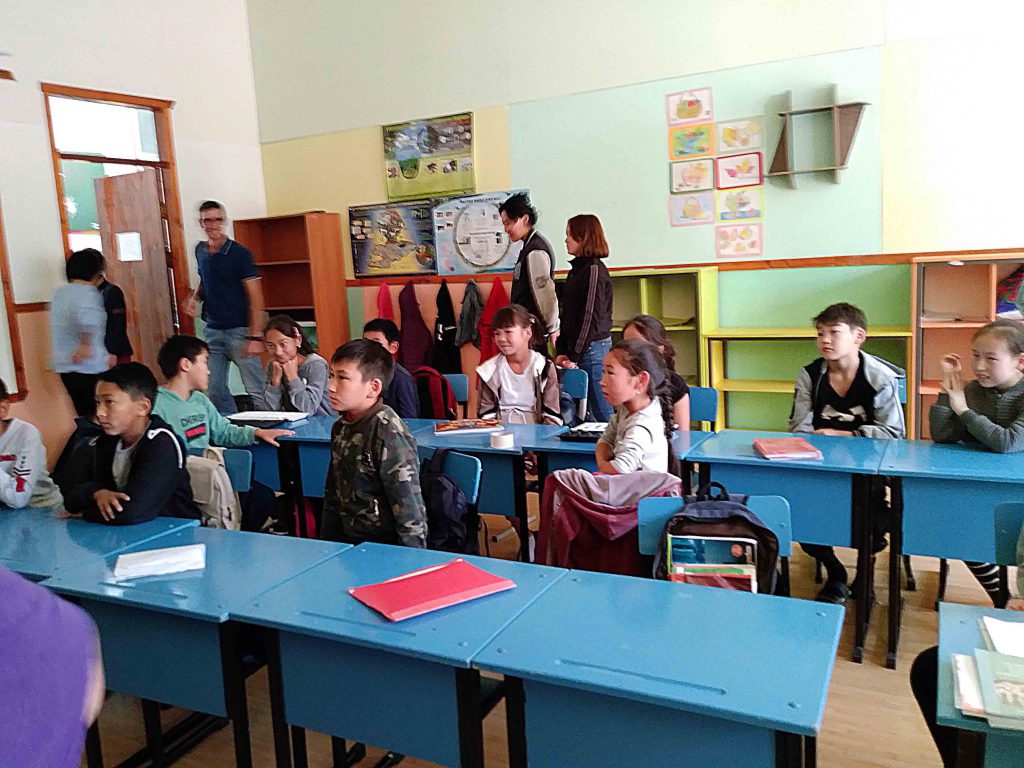
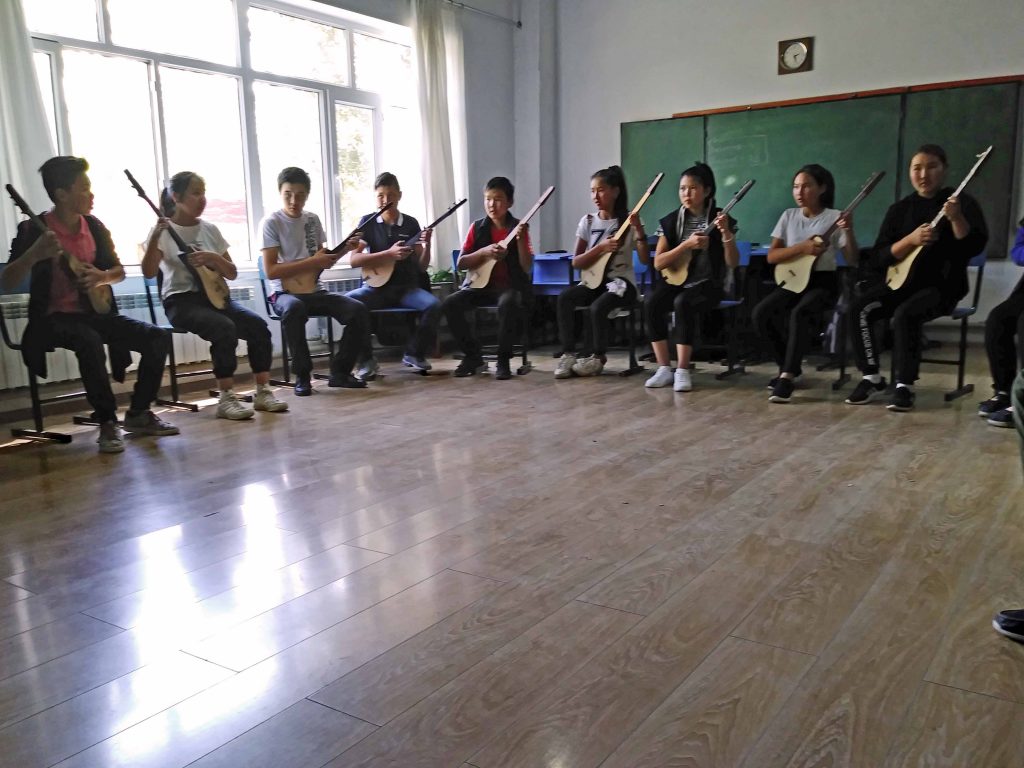
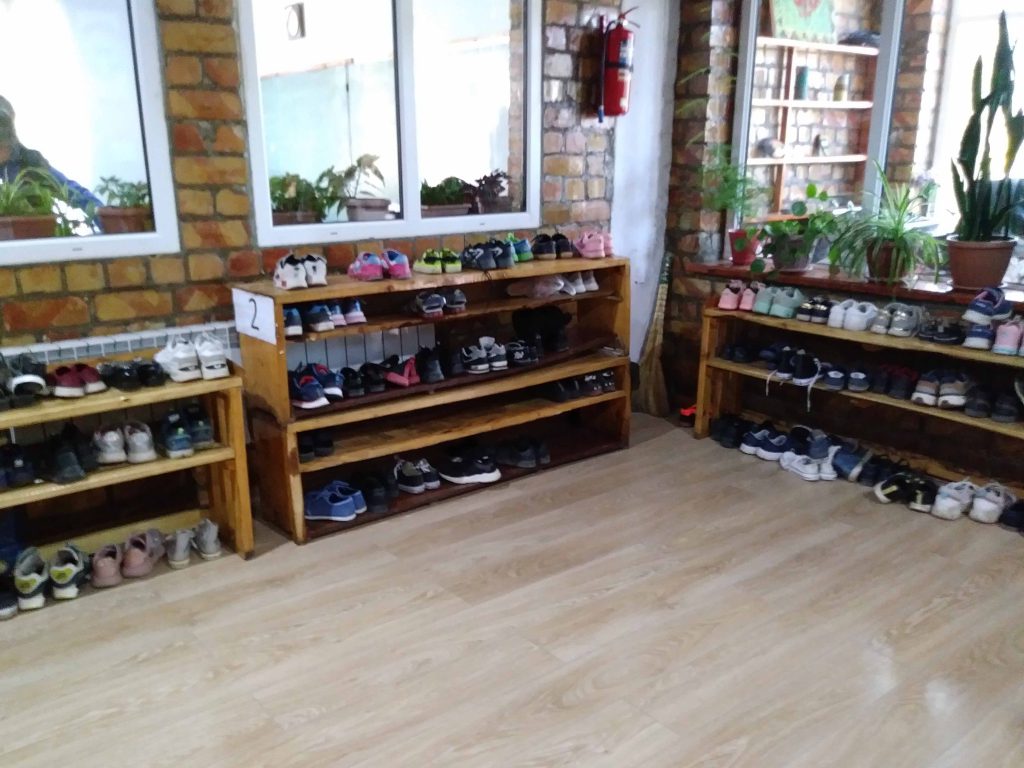
Later this afternoon, after it started cooling down a bit, we watched a game of Buzkashi–dead goat polo–though today it was a dead sheep.
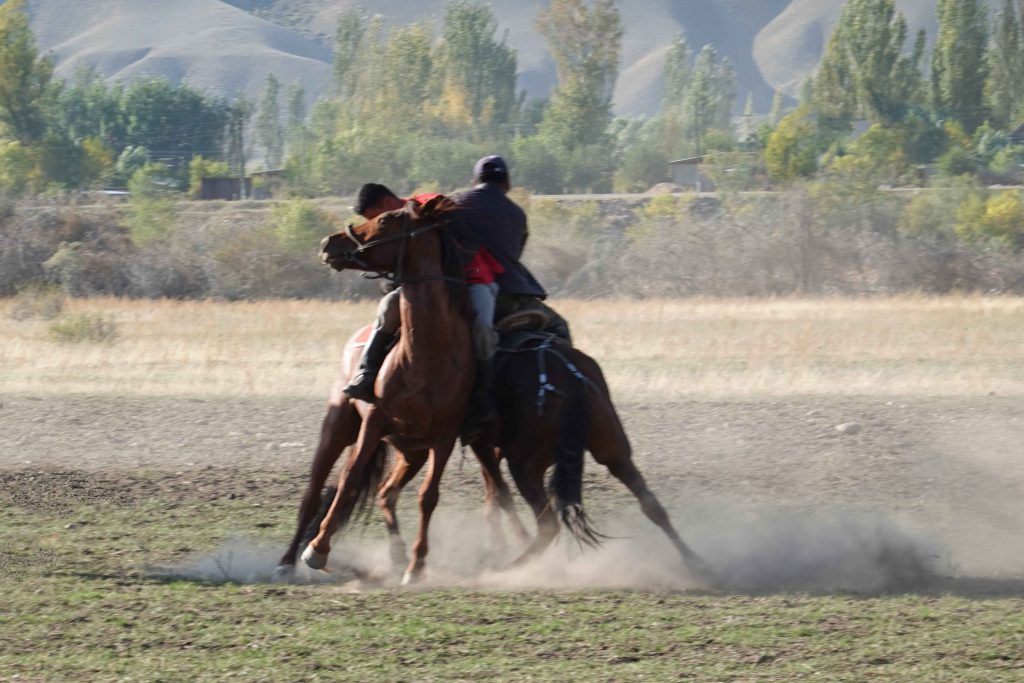
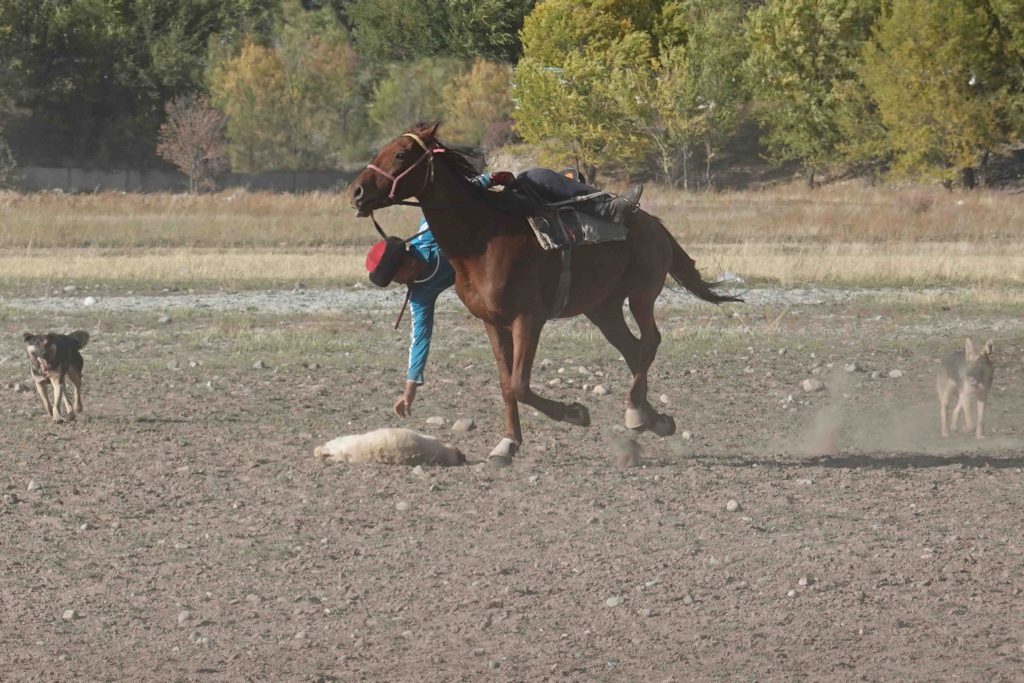
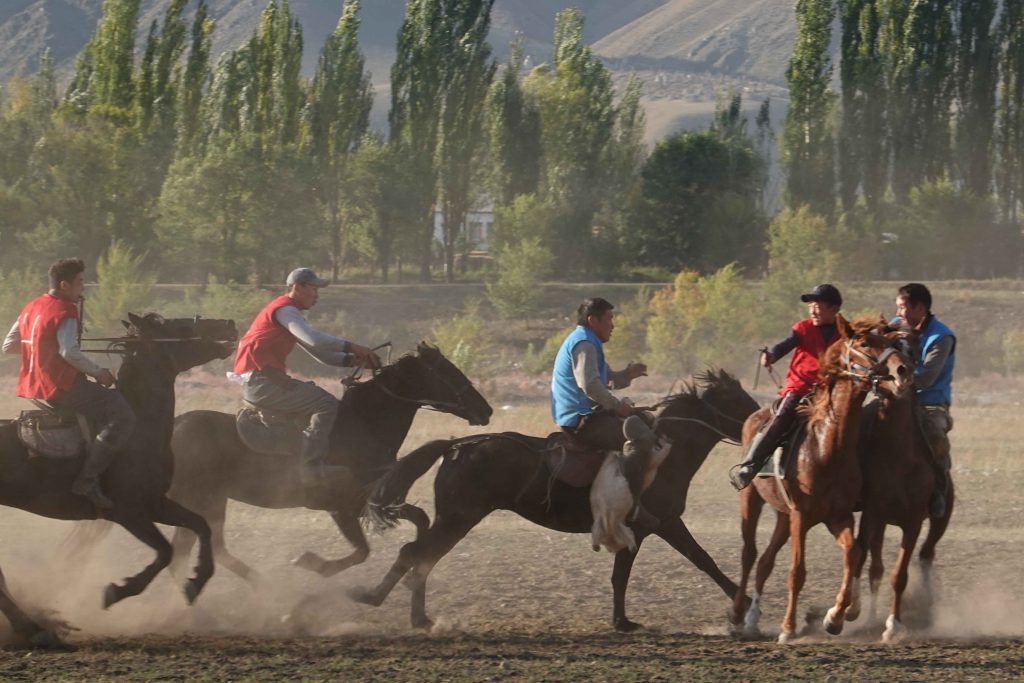
“My” team, the blue team, won.
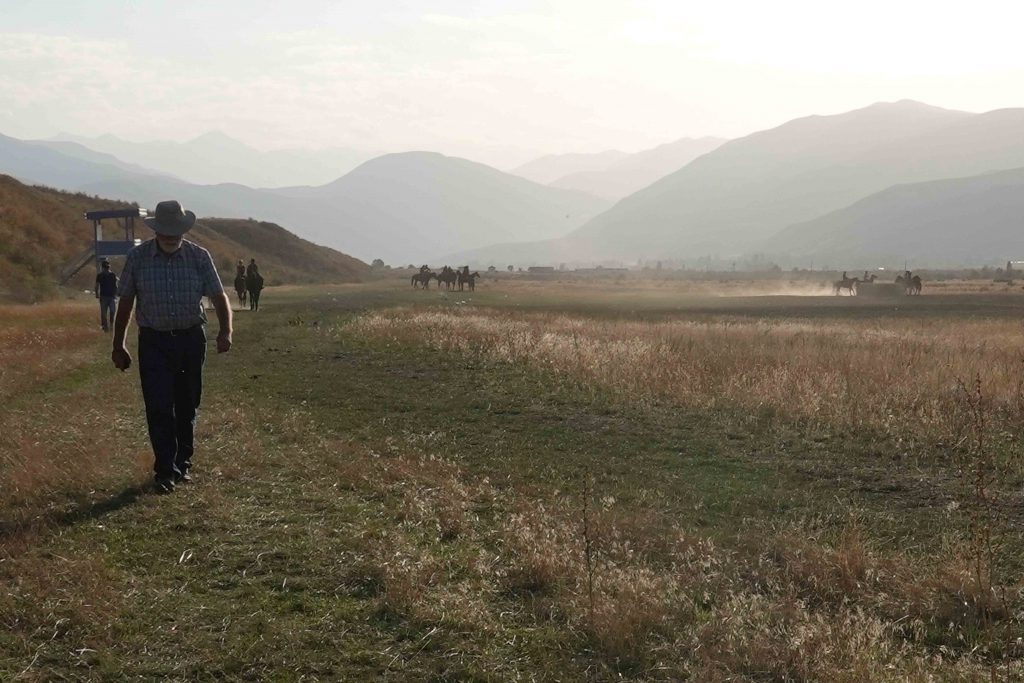
After dinner (apricot jam instead of raspberry, good but not as delicious as the raspberry we had a breakfast this morning) we were heading down the steps from the dining room and saw fresh picked raspberries being purchased by our guest house staff–we’ll be enjoying more raspberry jam tomorrow. Yum.
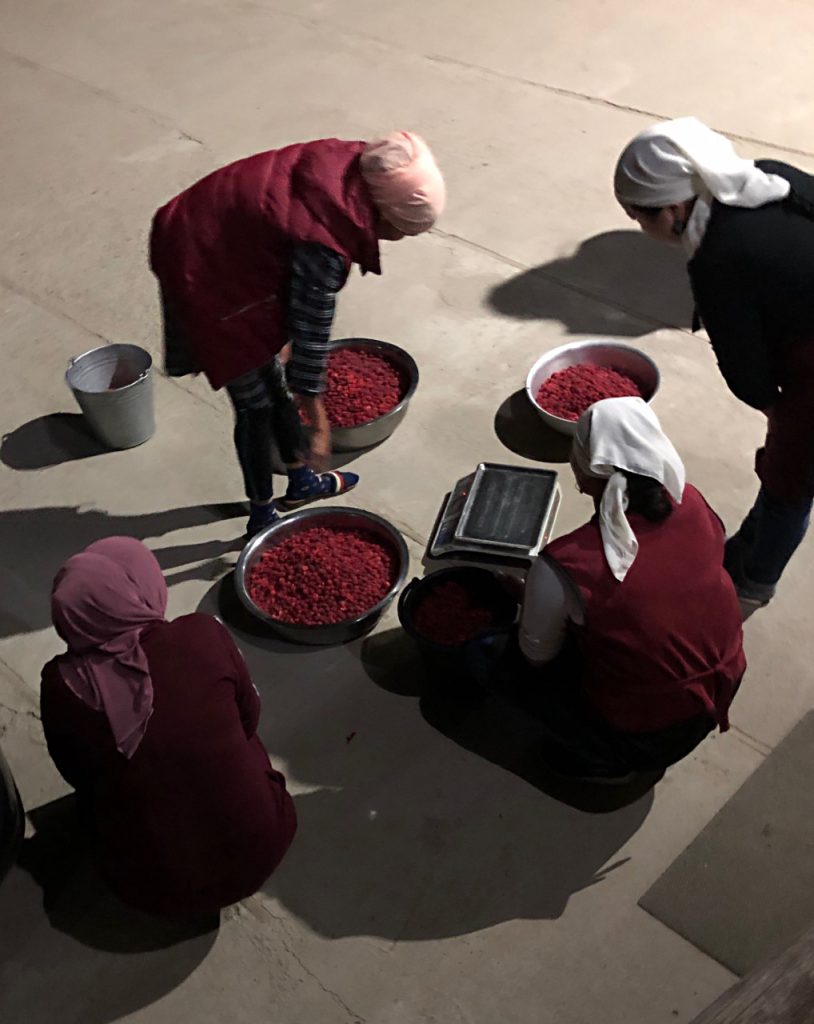
Chong Kemin Valley to Lake Issyk-Kul — Sept. 21
ElderTreks brochure: Today we drive to the Pearl of Tian-Shan, Lake Issyk-Kul and make a stop along the way in the village of Tamchy for a demonstration of felt production. We continue driving to Cholpon-Ata and board our boat to enjoy a lunch cruise on Lake Issyk-Kul. After lunch, we visit the open air Museum of Petroglyphs which covers about 42 hectares. The Petroglyphs date from the 2nd millennium BC to the Middle Ages. Overnight Three Crowns Hotel, Cholpon-Ata.
Fresh raspberries on my oatmeal this morning at breakfast.
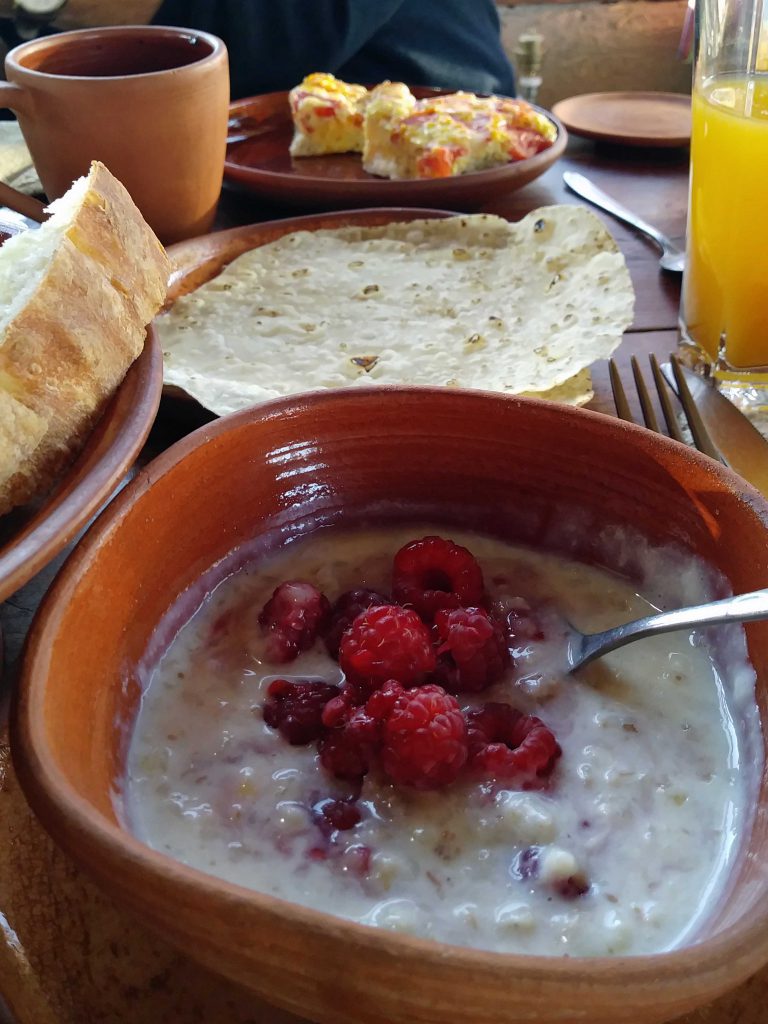
We were on our way at 8:30. The first stop had, to quote Leroy, “the most pristine toilets” he’s seen anywhere. Heard others commenting on that, too.
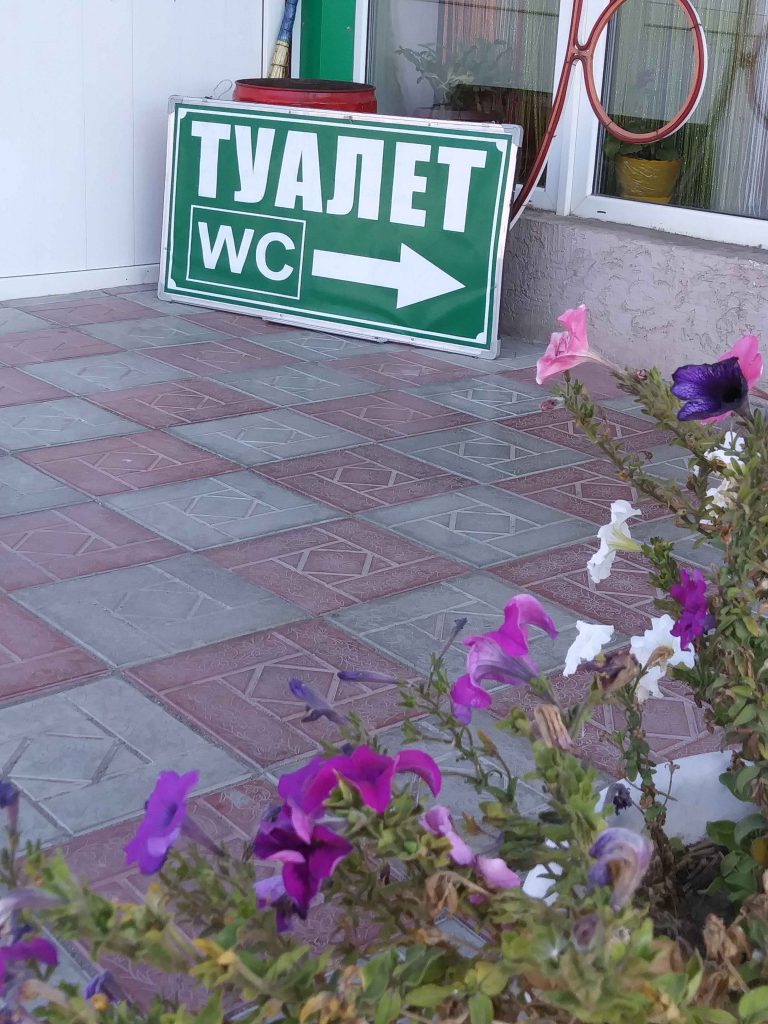
They also had an interesting and encouraging container to recycle empty plastic bottles.
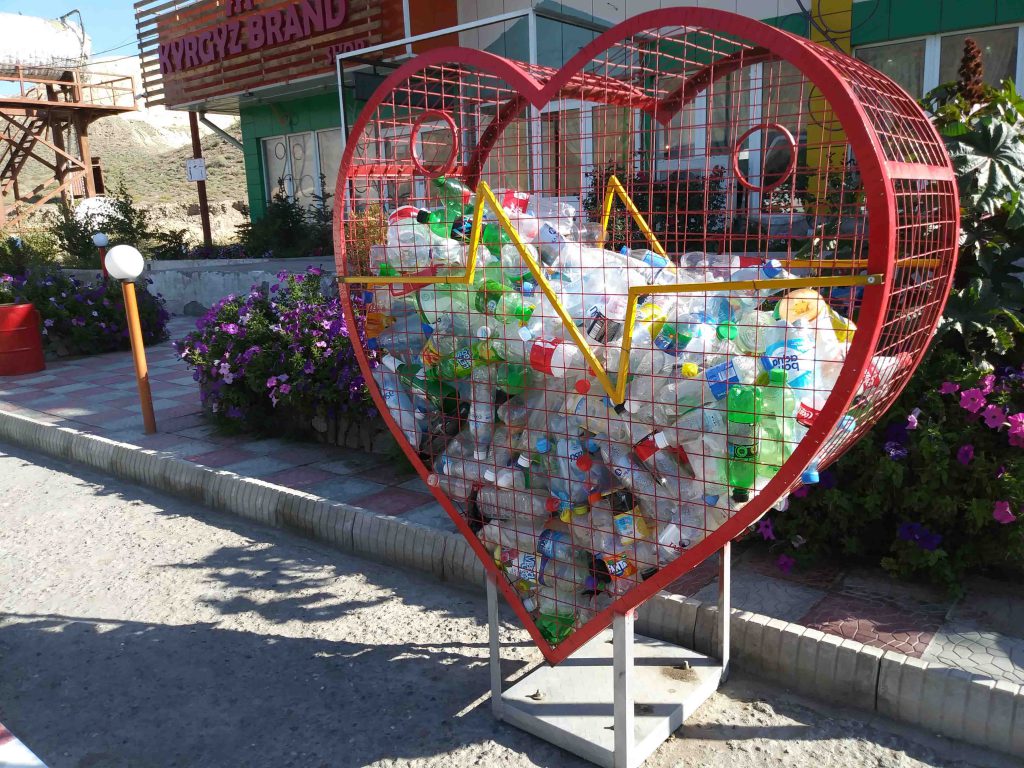
Part way along the drive, most of us got out of the bus and walked along the road for about 20 minutes. Elaine was a fount of knowledge of the plants along the side of the road paralleling the river. I’d point and ask, “What is that?” “Old Man’s Beard.” “And that one?” “Wild chicory.” I’d never seen many of the plants before, but Elaine knew the names of all but one.
A bit further along the way, Roger, our ElderTreks tour leader, bought some smoked trout for us to have with our dinner tonight.
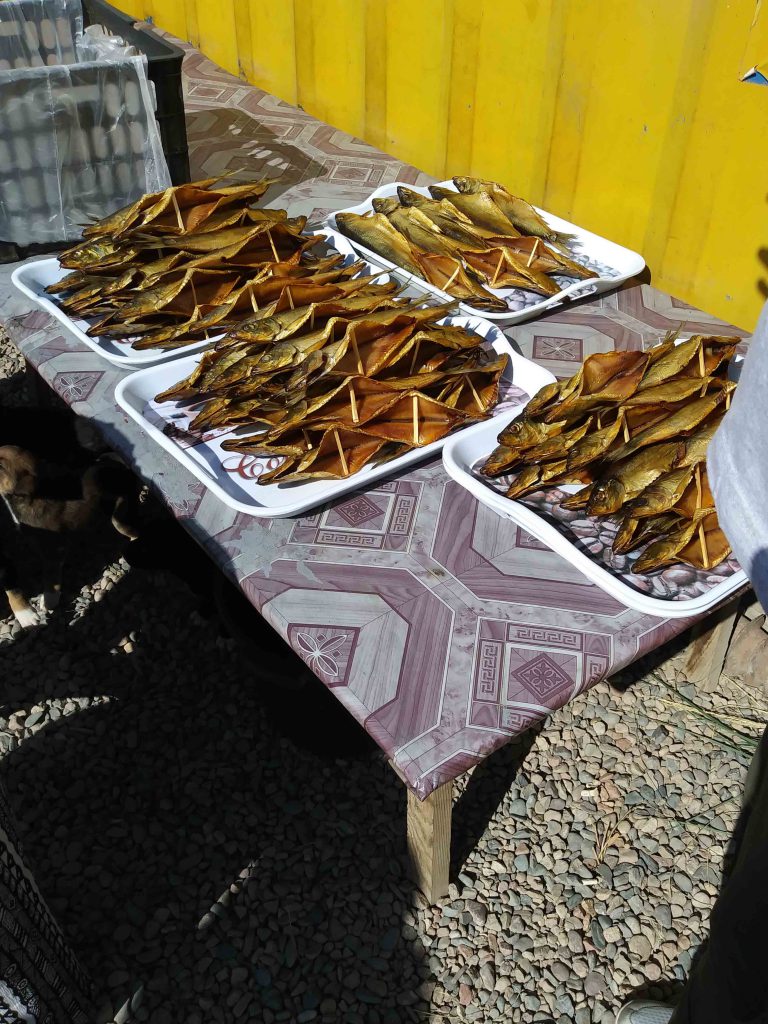
Next, we stopped at a place where the owner, Mrs. Happy, showed us how she makes felt. There was a small shop there with her products for sale and I found a phone case on a cord that fits my camera perfectly, now I can carry it cross-body.
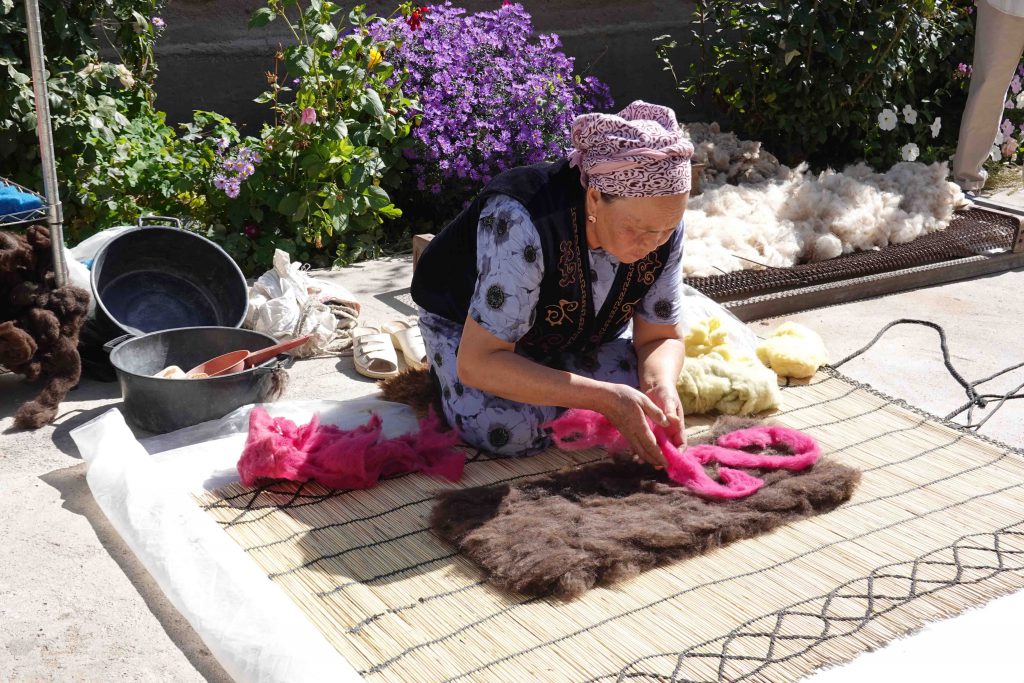
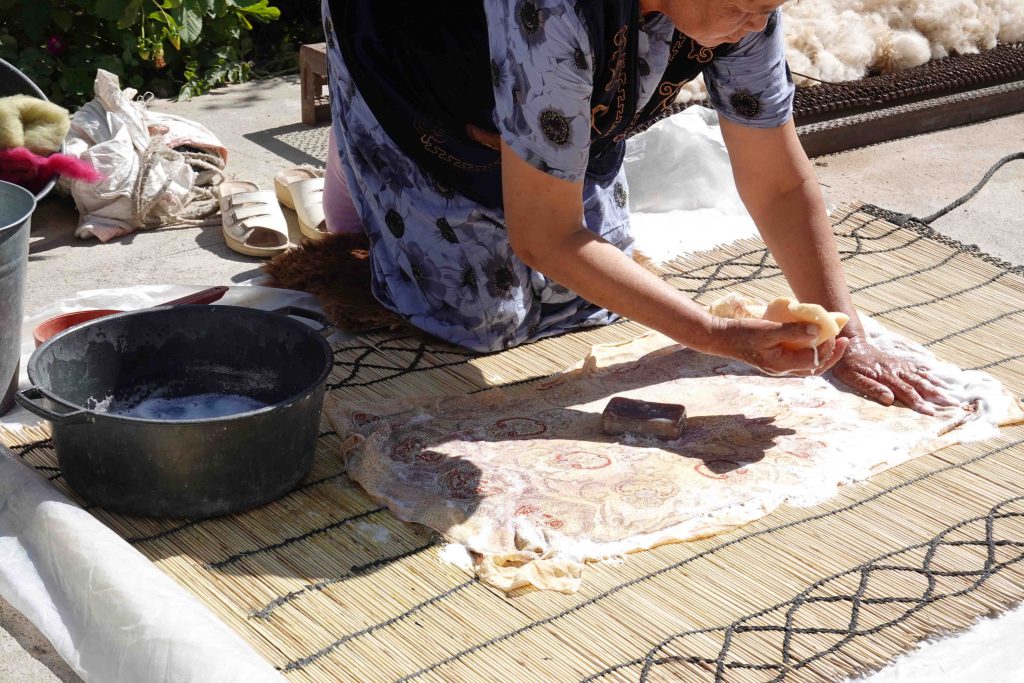
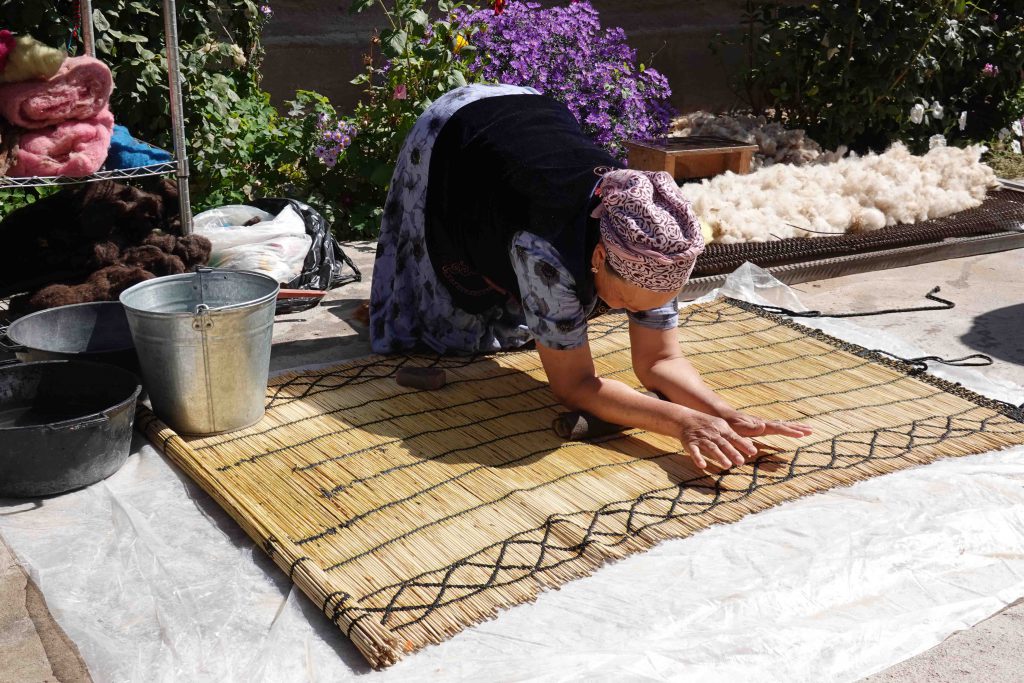
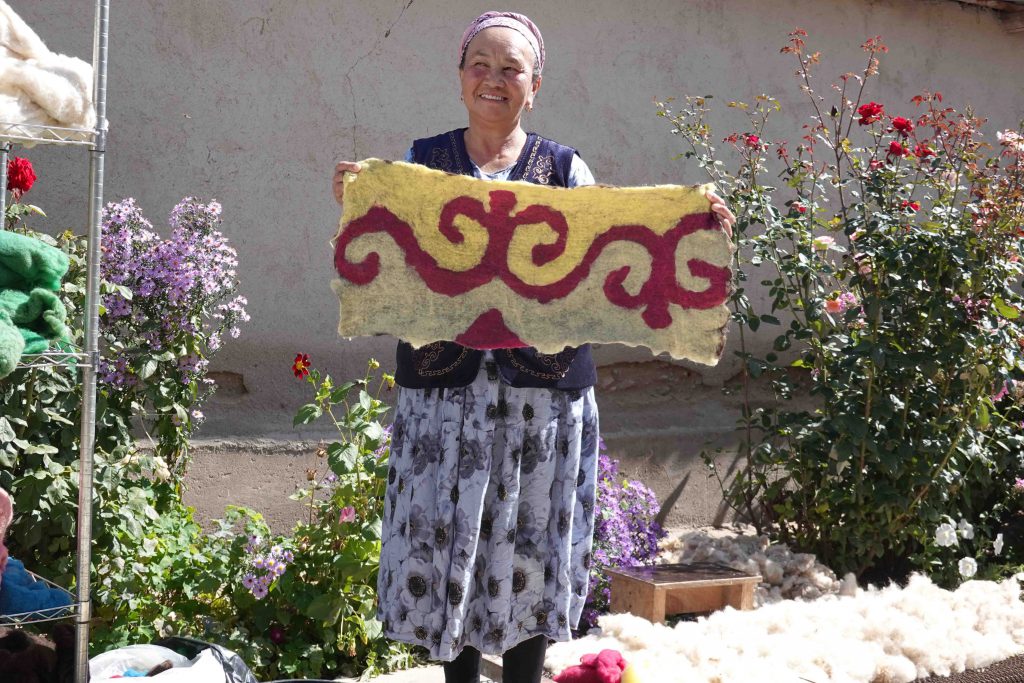
Lunch was on a boat sailing on Lake Issy-Kul. Large variety of dishes from which to choose; the meat was chicken and it was tender, and the potatoes were again extremely tasty with good texture.

After lunch we went to the open air Museum of Petroglyphs, a field of boulders, many with pictures scratched into their surfaces. Some of them date from the Bronze Age, about 1500 BC, most are Saka-Usun, 8th century BC to 1st century AD (predating the arrival of the Kyrgyz), with the very latest ones from the Turkic era, 5th to 10th century.
My favorite is the one right at the entrance of snow leopards hunting ibex. Ilya, our country guide, told us that snow leopards (top center) could be domesticated and were trained to hunt with the people who are depicted in the upper left corner.
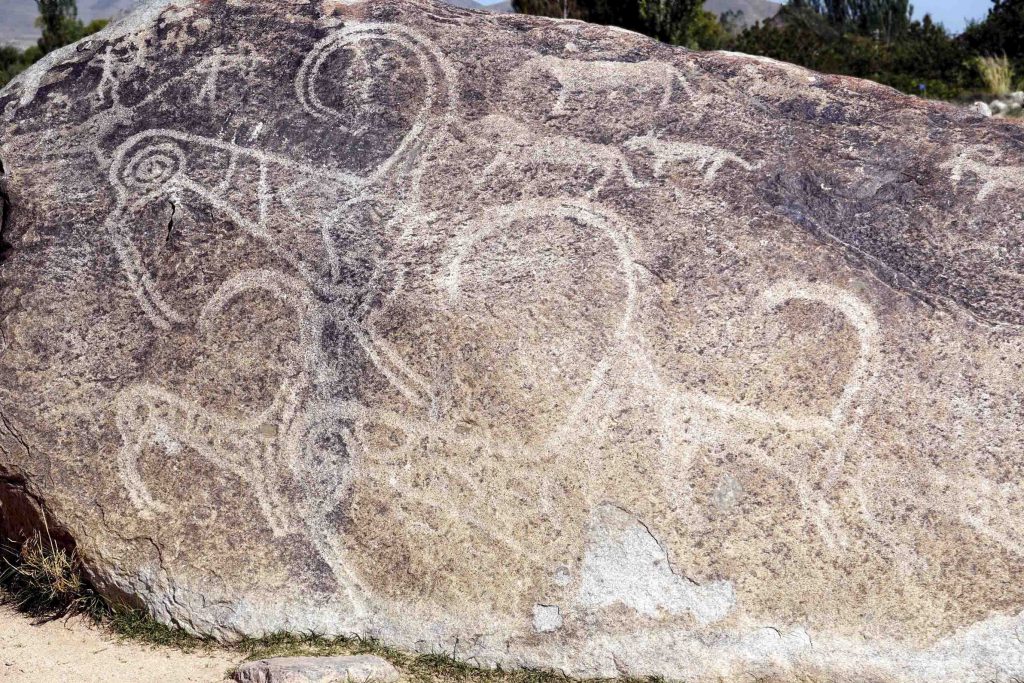
Then off for a visit to the indoor Museum. By this time I was starting to flag and know I didn’t do justice to all the fascinating items and good information in it.
Dinner tonight included the smoked trout Roger purchased. Leroy liked it so much, he’s going to make some when we return home. There was strawberry jam–small local strawberries. They have such delicious fruit in this country.
Cholpon-Ata: Day trip to Karakol – Sept.22
ElderTreks brochure: Today we will drive to the town of Karakol to visit to the Preshevalsky Museum, which is dedicated to the memory of Nikolai Michailovich Preshevalsky, an enthusiastic explorer accredited for his excellent works on flora and fauna of the Issyk-Kul region. He was also known for breeding a tiny horse on the steppes of Tibet, which later came to be known as the Preshevalsky Horse. We also visit the local Orthodox Church and mosque before returning to Cholpon-Ata. Overnight: Three Crowns Hotel.
I didn’t go on today’s outing for a couple of reasons, the first was I wasn’t really interested, the other was my tummy was giving a few twinges and I was concerned it would get worse. It didn’t. I enjoyed my quiet day, reading and high-grading photos.
At dinner, I heard mixed comments from folks–some enjoyed the day, some disliked how much time was, necessarily, spent on the road, others were indifferent.
Trish found learning about Nikolai Mikhaibvich Przhevalsky (a 19th century Russian who was sent by the Tsar to explore the Central Asia region), the routes of his various journeys, and his discovery of several unknown species including the horse named after him, fascinating. Przhevalsky died of typhoid fever on the shores of Issyk-Kul and is buried in the Museum’s courtyard.
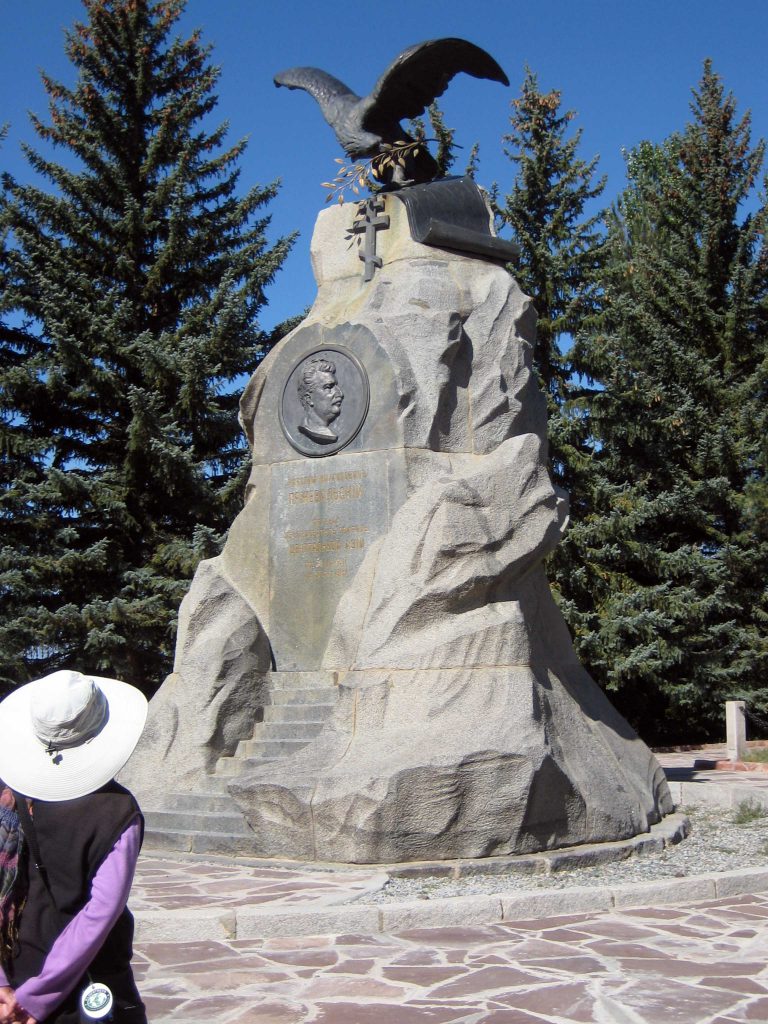
Below are some of Leroy and Elaine’s photos.
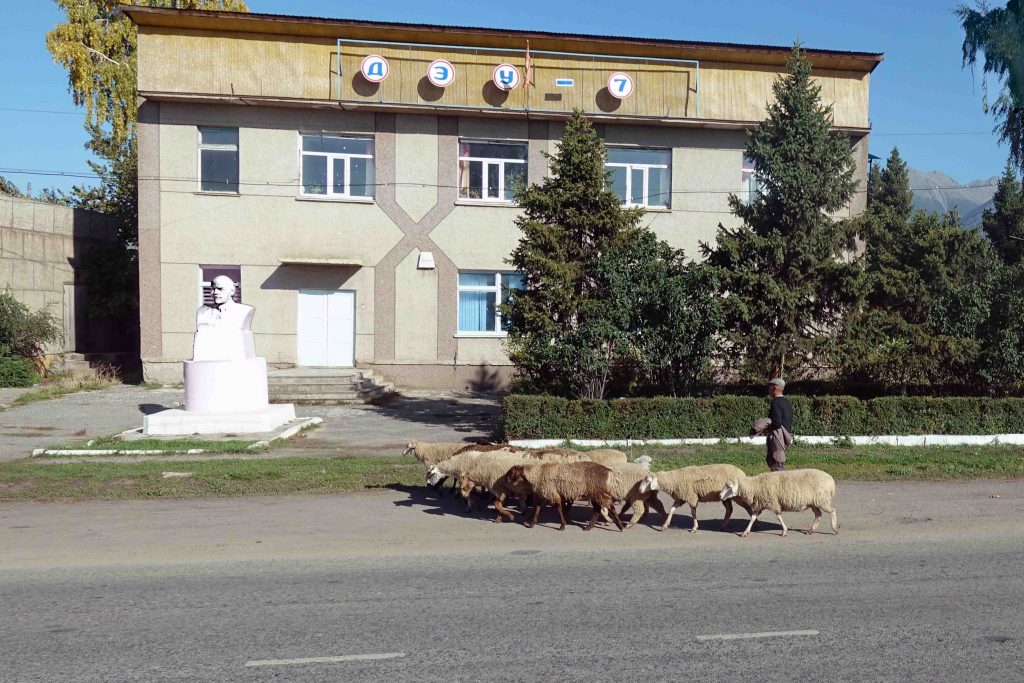
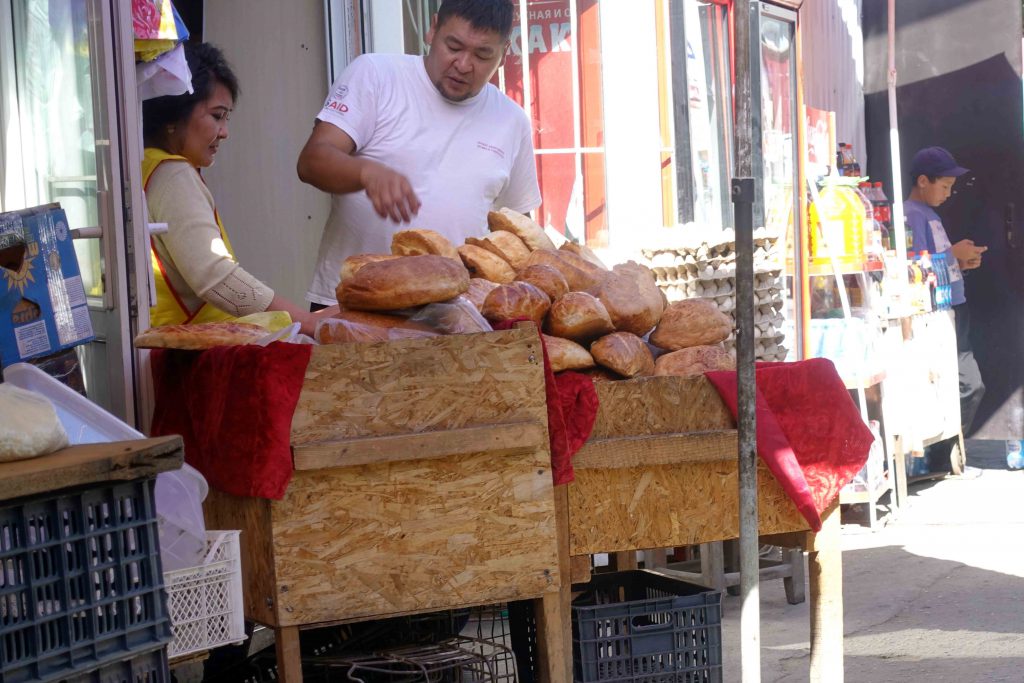
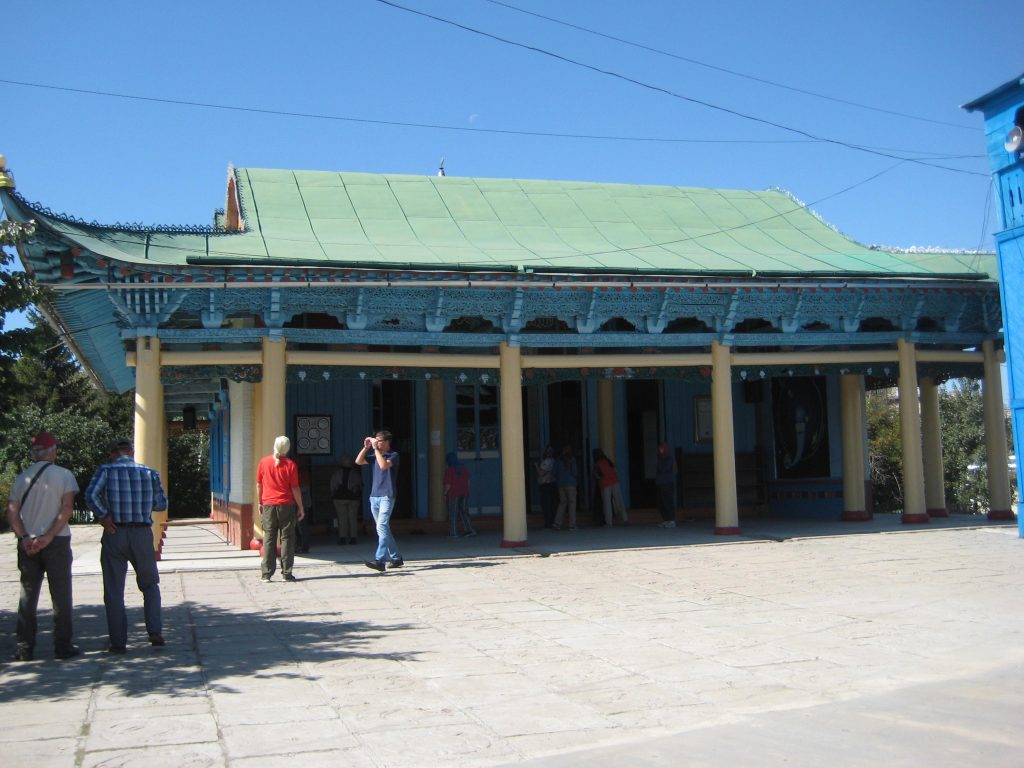
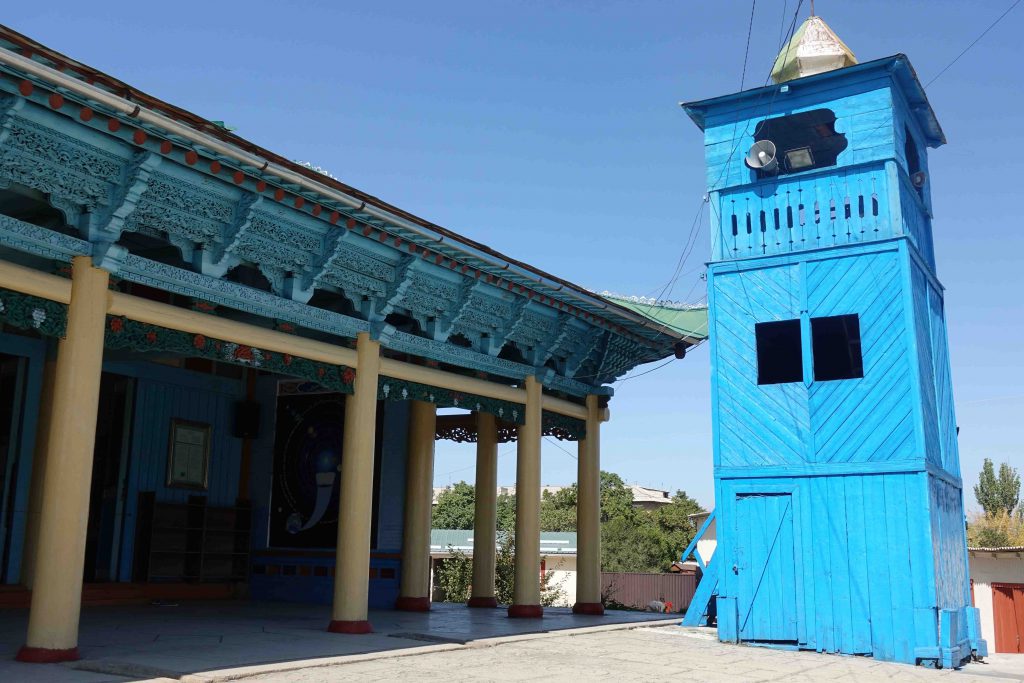
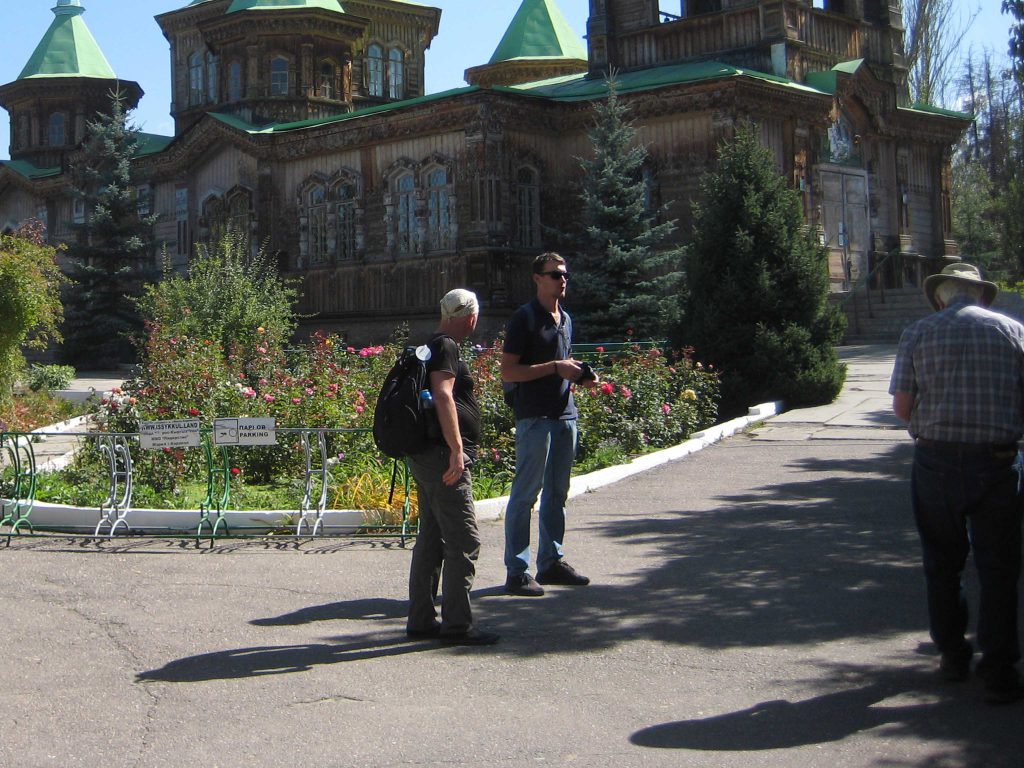
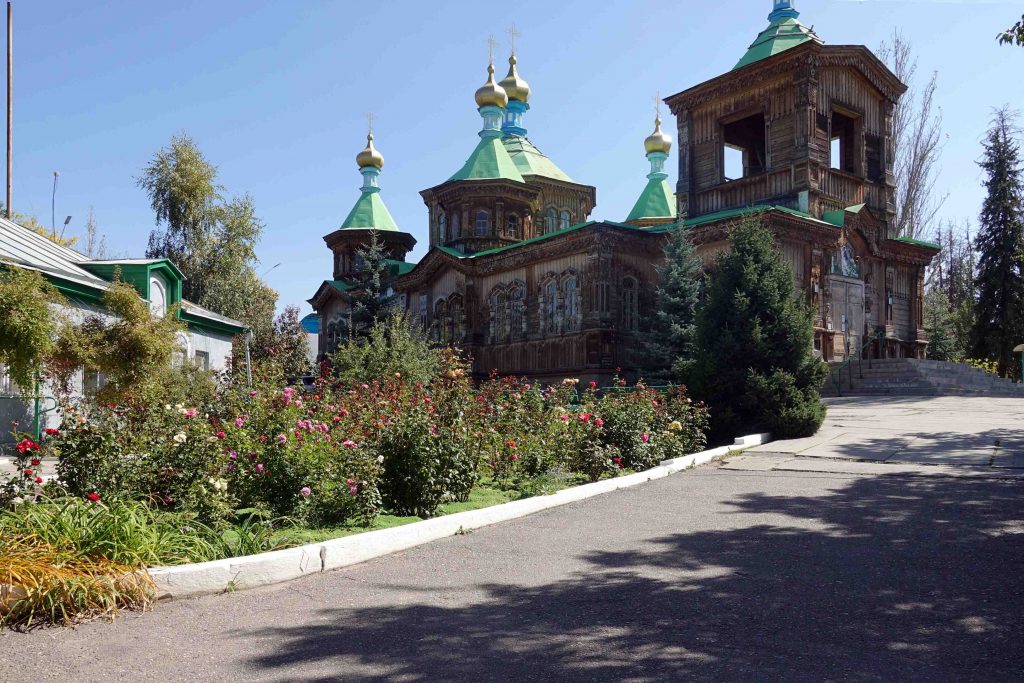
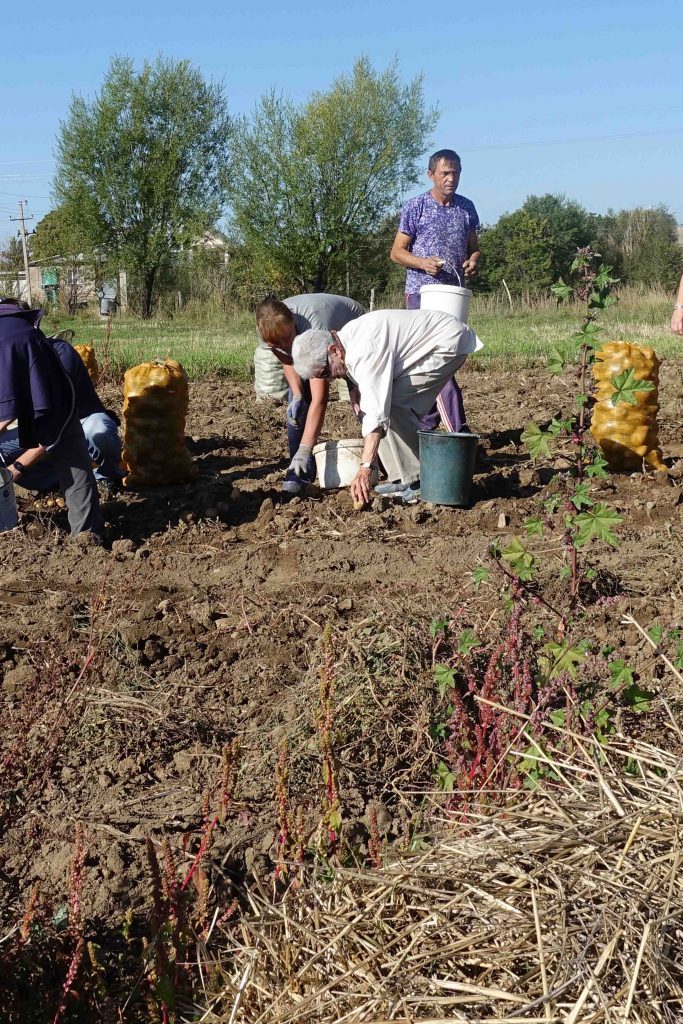
We are in Building 2 on the second floor. There are three buildings each with three floors, no elevator. 3 minute walk from ours to Building 0 that has the dining room. Not as far as some places, I remember one where it was a seven minute walk, some of it across a courtyard in the rain!
Our hotel room is spacious but the bed is hard. Not unbearably hard but enough that I needed to fold over the duvet on top of the mattress to add a bit more softness.
To Bishkek – Sept. 23
ElderTreks brochure: Today we continue to Bishkek stopping enroute at the Burana Tower Archaeological Museum, which is situated on the site of a caravan town dating from the 10th century. Surrounding the area are mysterious stone heads perhaps representing ancient Kyrgyz gods. Overnight in Bishkek, Golden Dragon Hotel.
The hotel we’ve been staying at in Cholpon Ata, The Three Crowns, supplied a hair dryer, shampoo, and plenty of towels. I include these type of details, when I remember, because it may help others–if every hotel has a hair dryer, why lug one’s own along?
One thing I didn’t know–rooms at the Three Crowns won’t be made up and supplies replenished unless you turn in your key to your local guide (or some member of the staff, I guess) when leaving for the day, or even staying around as I was yesterday. We were out of the hotel’s shampoo but I’d packed a couple of nice smelling heart-shaped solid shampoos, “just in case”. It worked extremely well this morning, better than the 1″ square hotel packets, surprised both of us how nice our hair felt. This photo shows it next to the bathroom supplies at tonight’s hotel, the Golden Dragon.
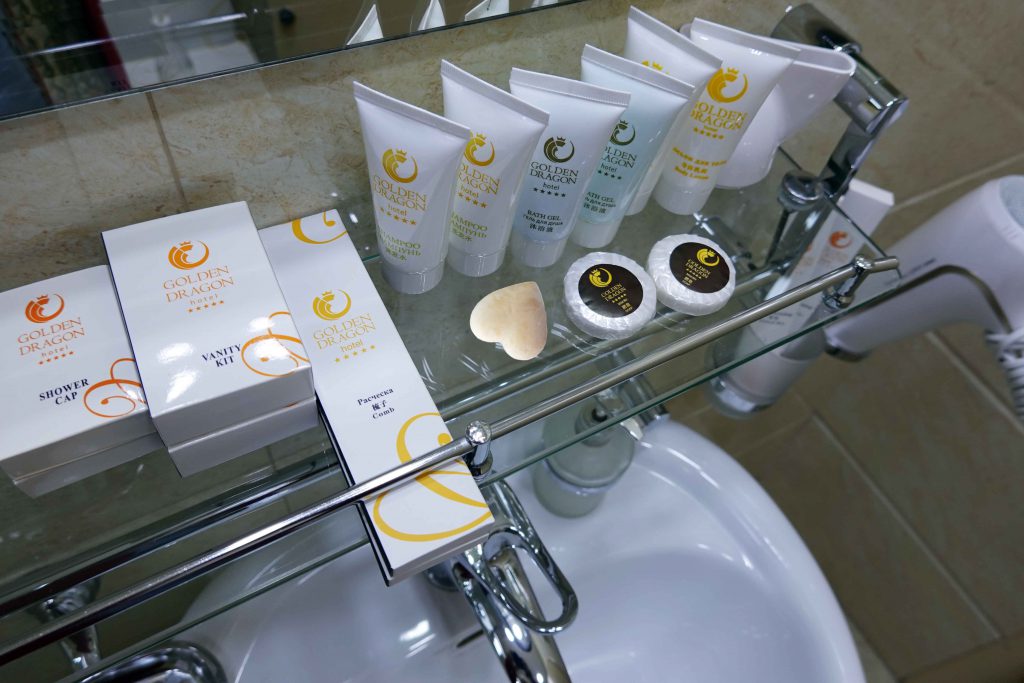
Elaine thinks she might be catching the cold that’s starting to go around the group. Hope not.
Nice late start this morning, bags outside the bedroom door by 8:30, leave at 9 a.m. We left about ten to as everyone was on the bus and raring to go.
We stopped at Mrs. Happy’s (the felt maker lady) to pick up the dried felt mat/wall hanging. Three people, including Trish, wanted to buy it, so a draw was held and the person with the happy face would be the winner. And….drum roll….it was Trish! She’s going to have it framed and entered in the Juvenile Diabetes auction with a narrative of where it was made and some pictures. Even though it is not to either of our tastes, it was to others, and she thinks it should command a good price as it’s unusual and will have an exotic and interesting story.
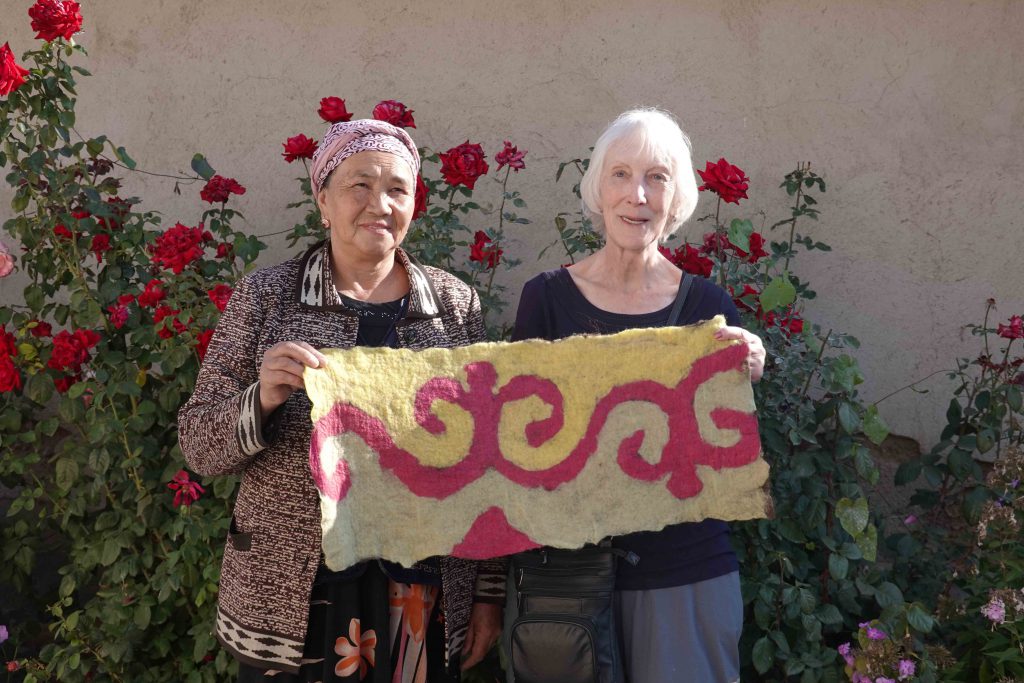
Along the way some of us took pictures from the bus of a Muslim cemetery. Ilya, our local guide, said after a person is buried, no one goes back to visit them.
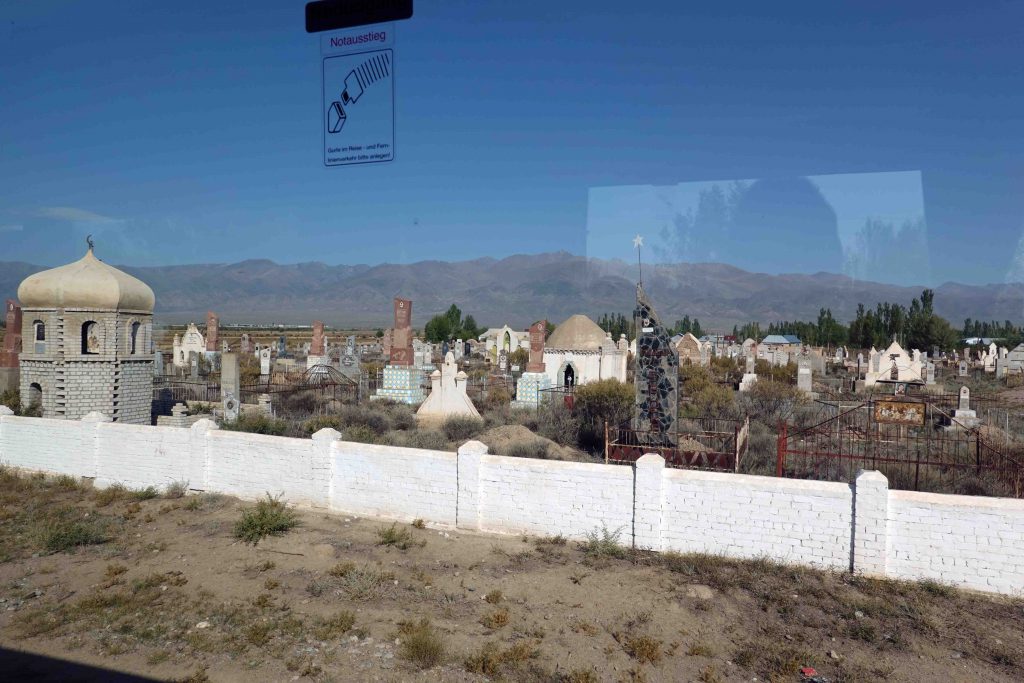
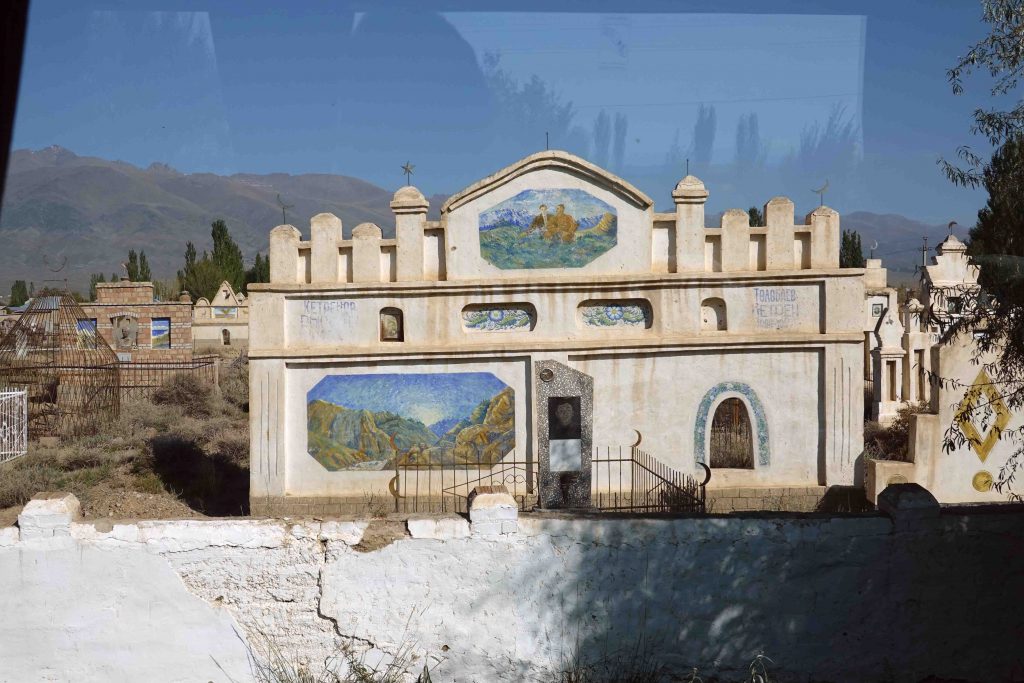
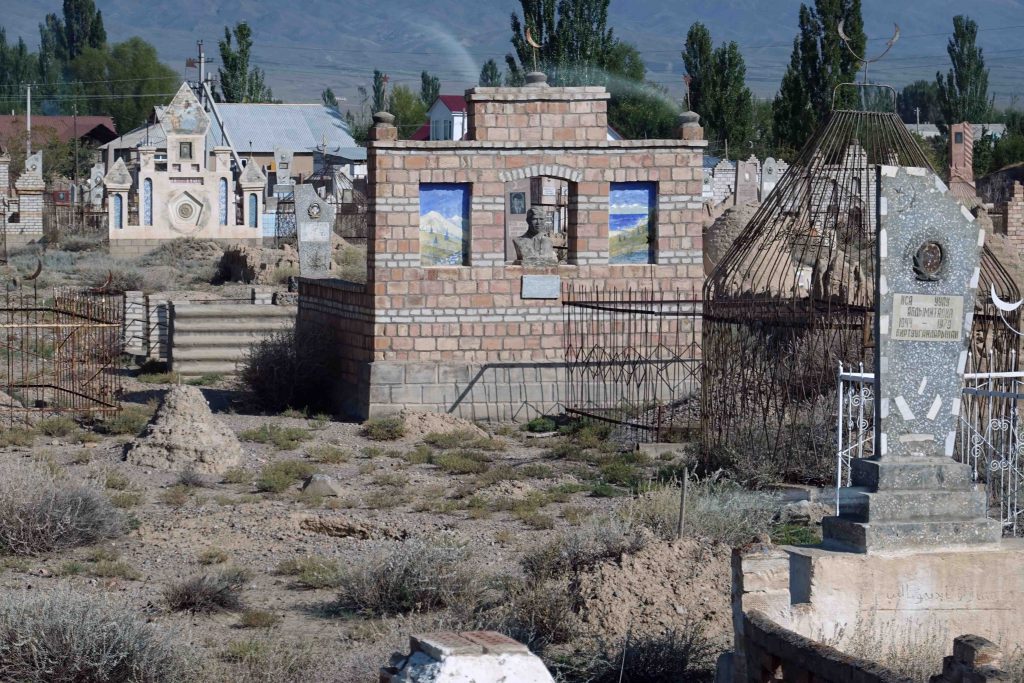
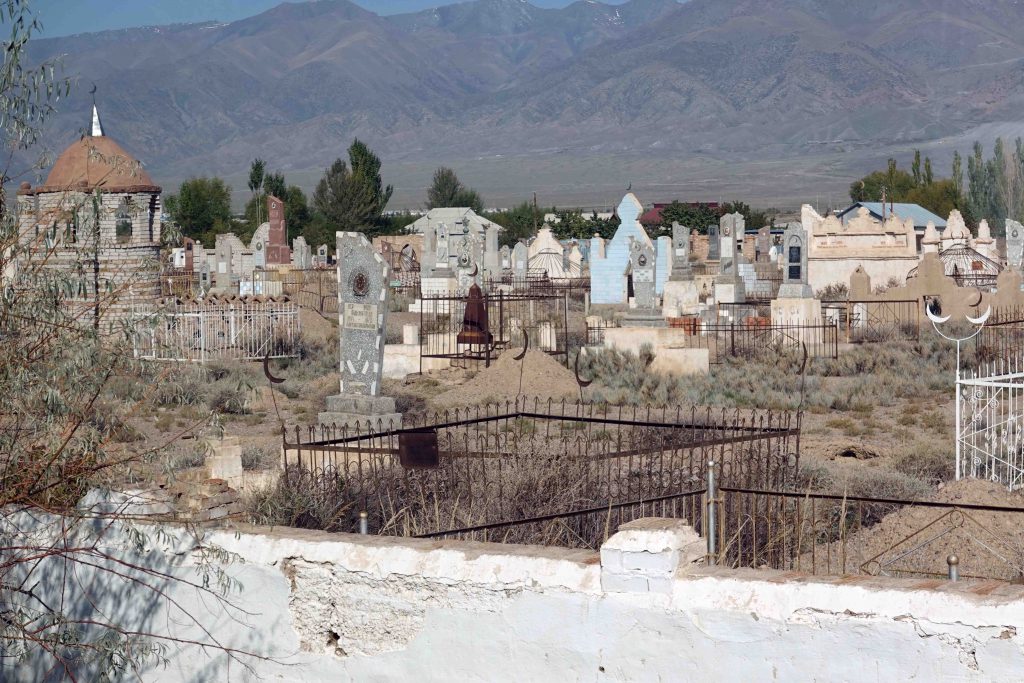
This handsome fellow is in the process of installation at a truck stop. Ilya thinks he was a local man.
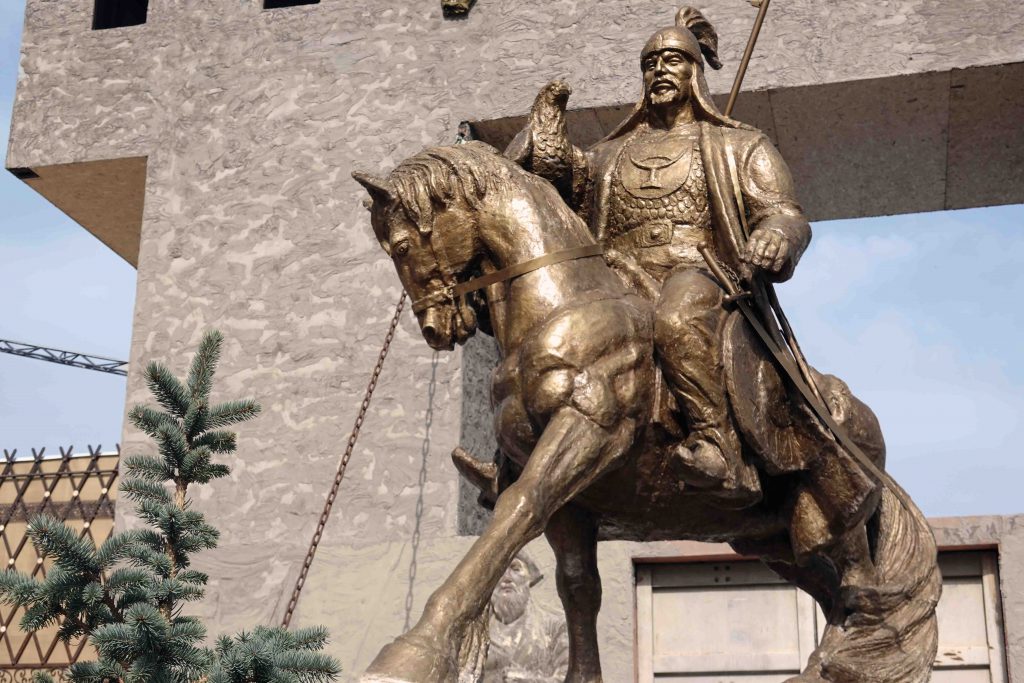
This rest stop, like the previous one that had the metal heart for plastic, had super clean toilets, including western-style potties.
We saw corn being dried on the ground, school children, people of middle age and older dressed traditionally, potatoes being harvested, and men on horses in the fields and along the road. I never managed to get a successful photo of most of these from the bus.
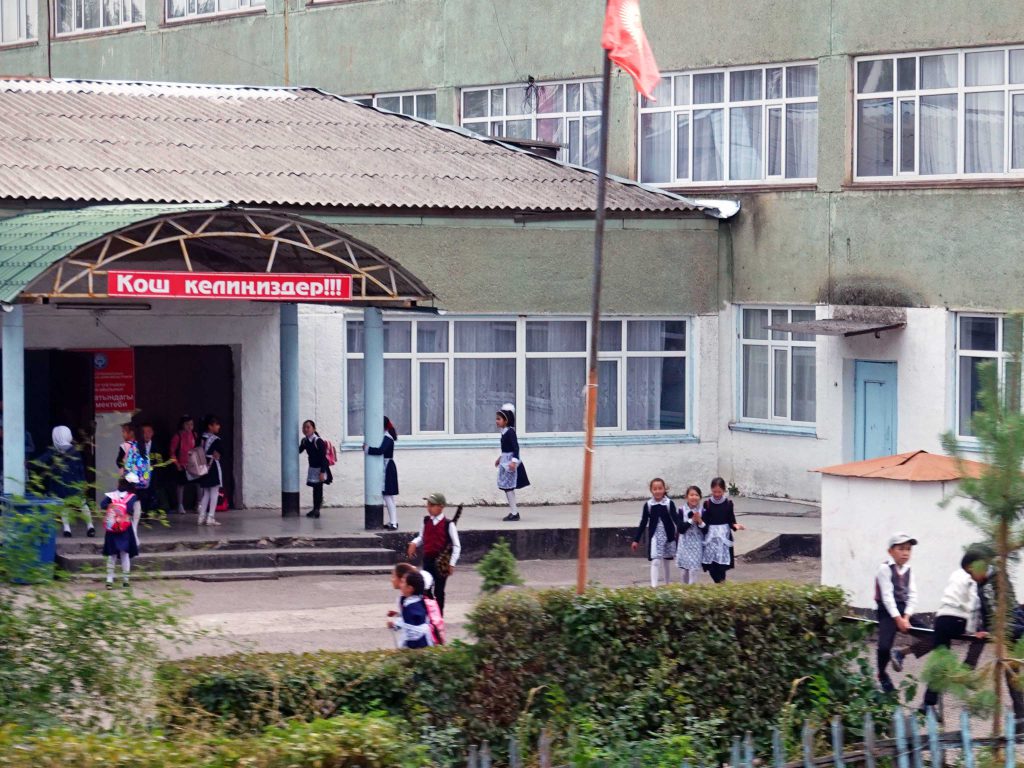
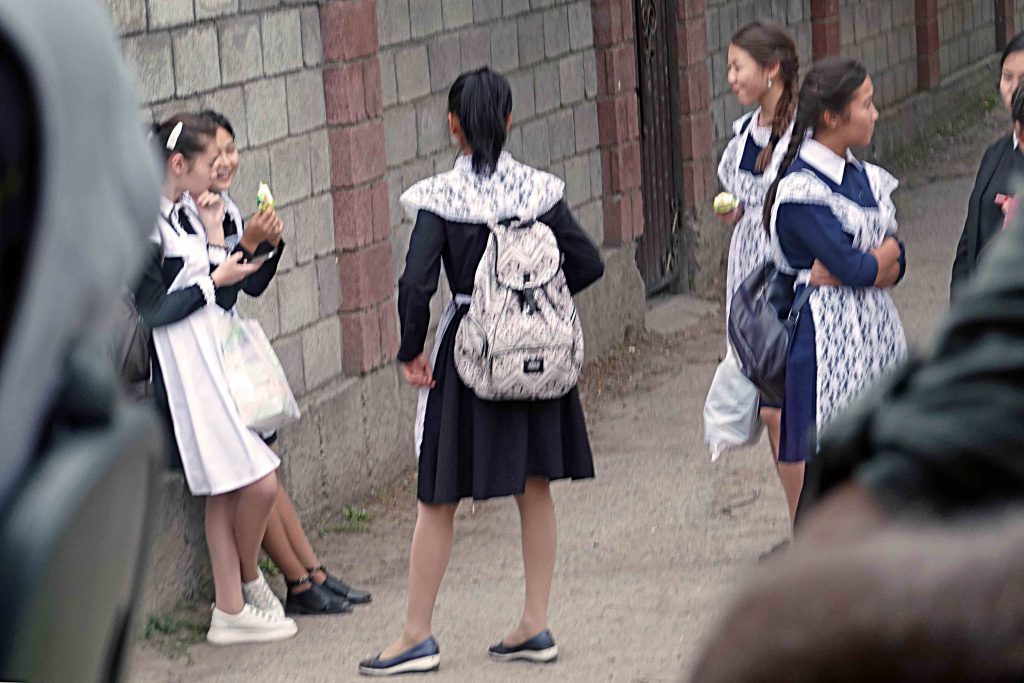
Lunch was fabulous and in a yurt (the local family pronounced it “you-ta”).
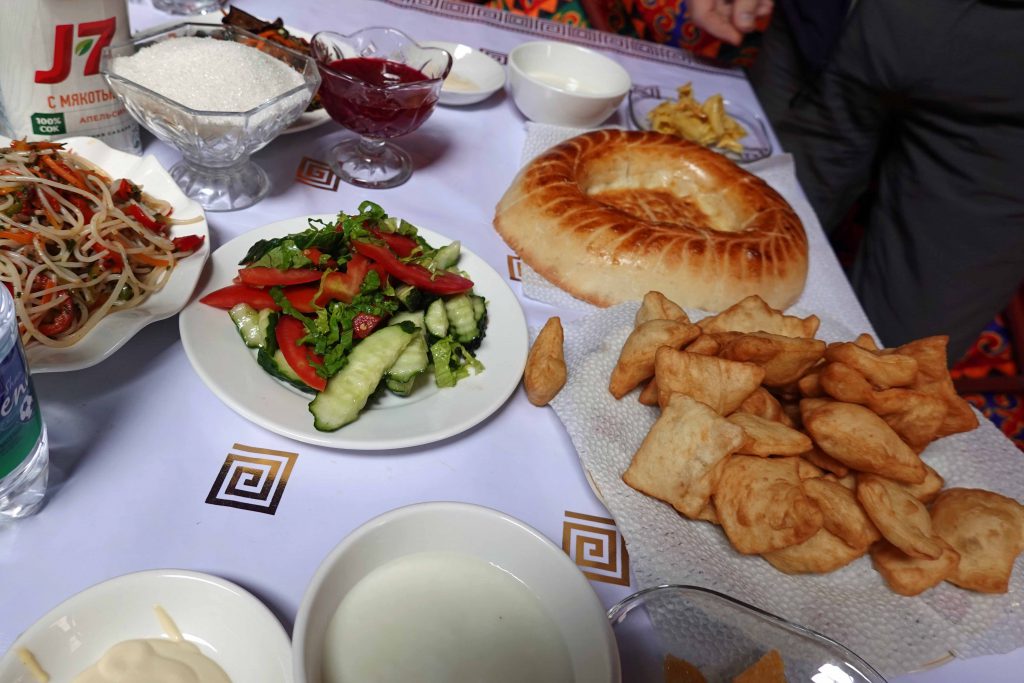
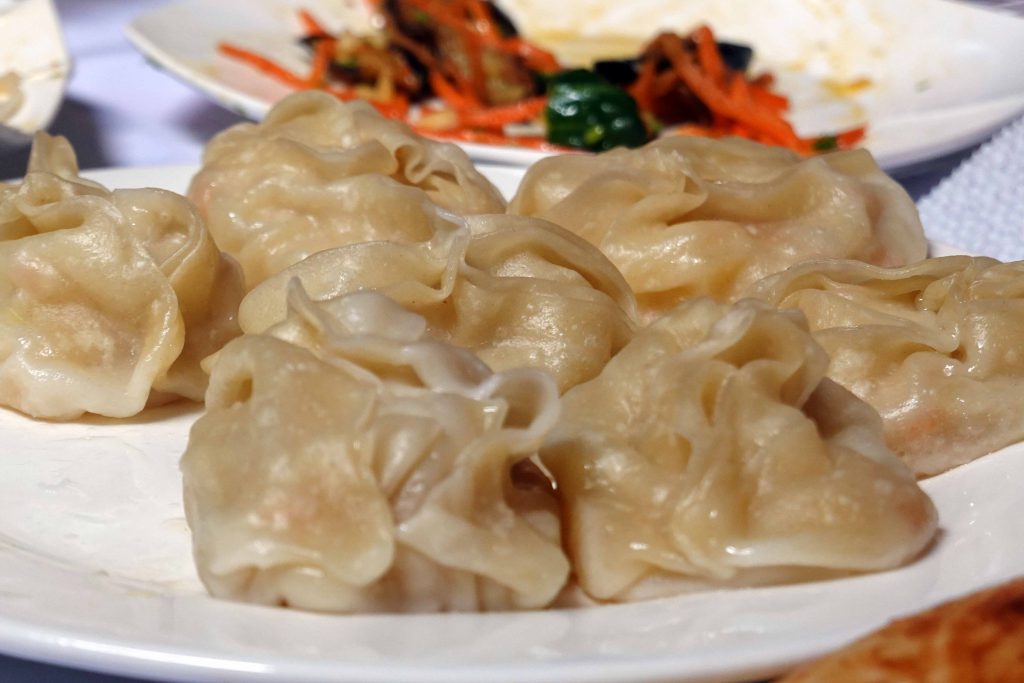
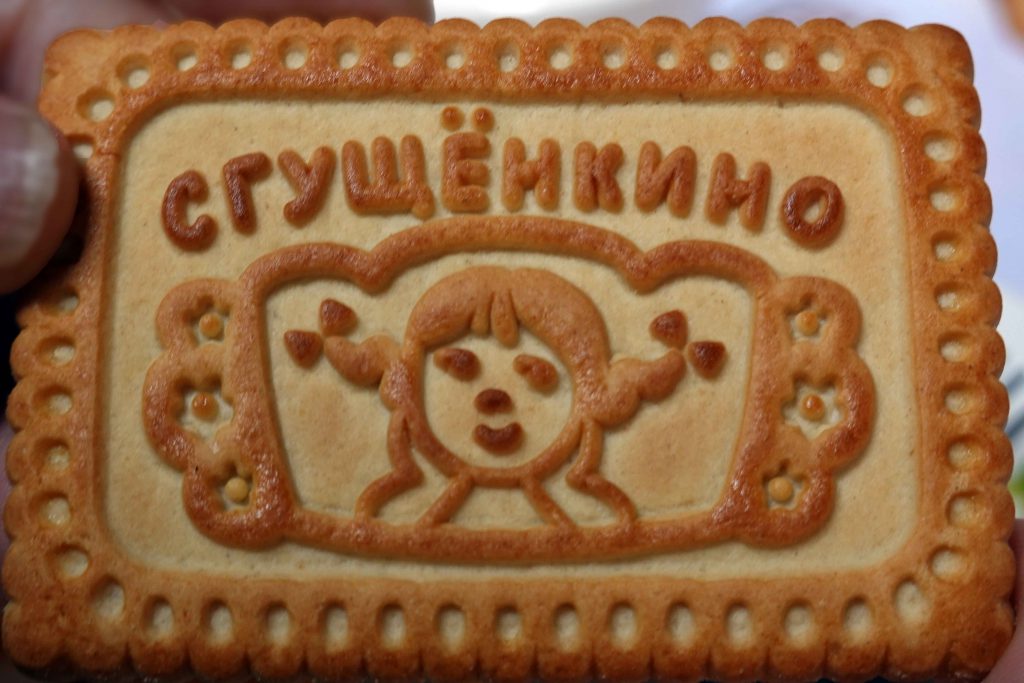
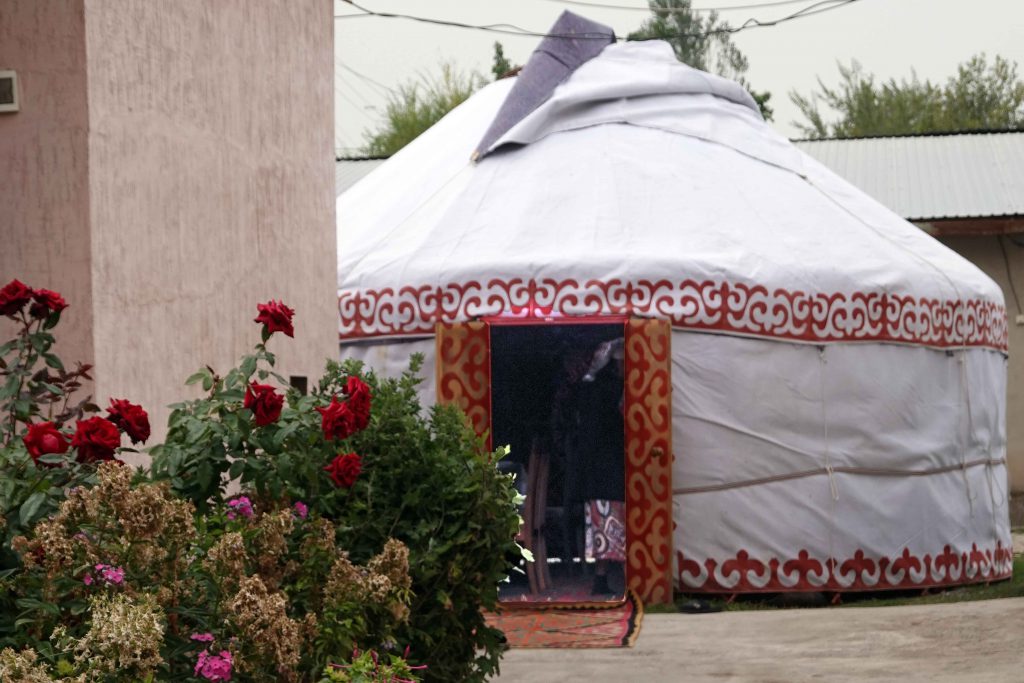
We stopped at Burana Tower, it used to be taller but the top half fell off in an earthquake. Also saw the stone balbals that are at that site, not much is known about them. Cliff Notes version: The guys have mustaches and the gals don’t. There’s a small and interesting museum, and a gift shop.
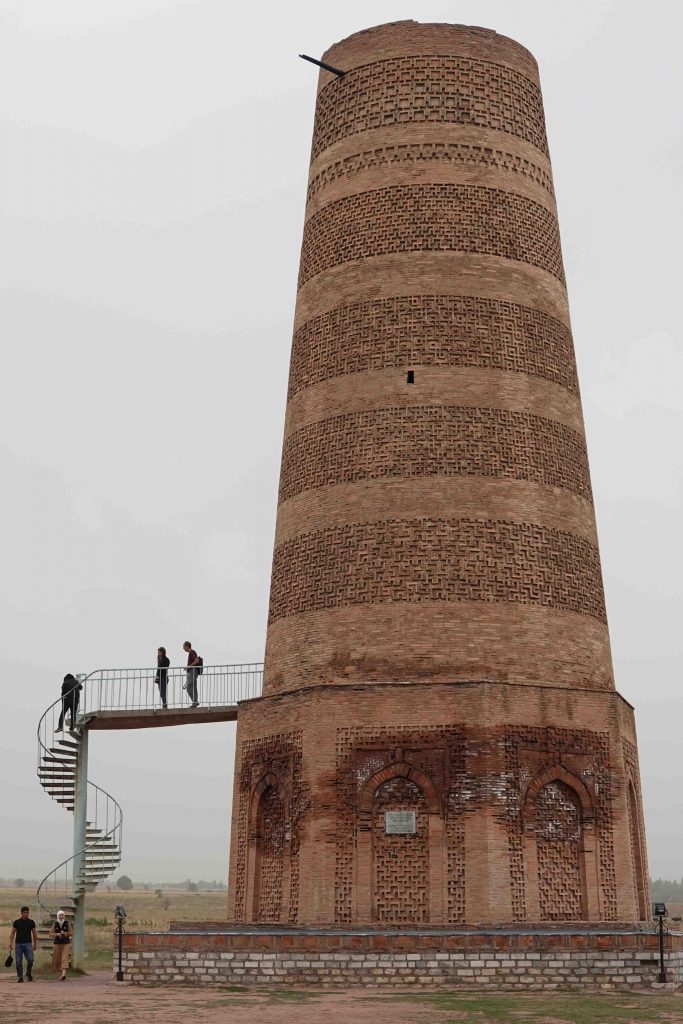

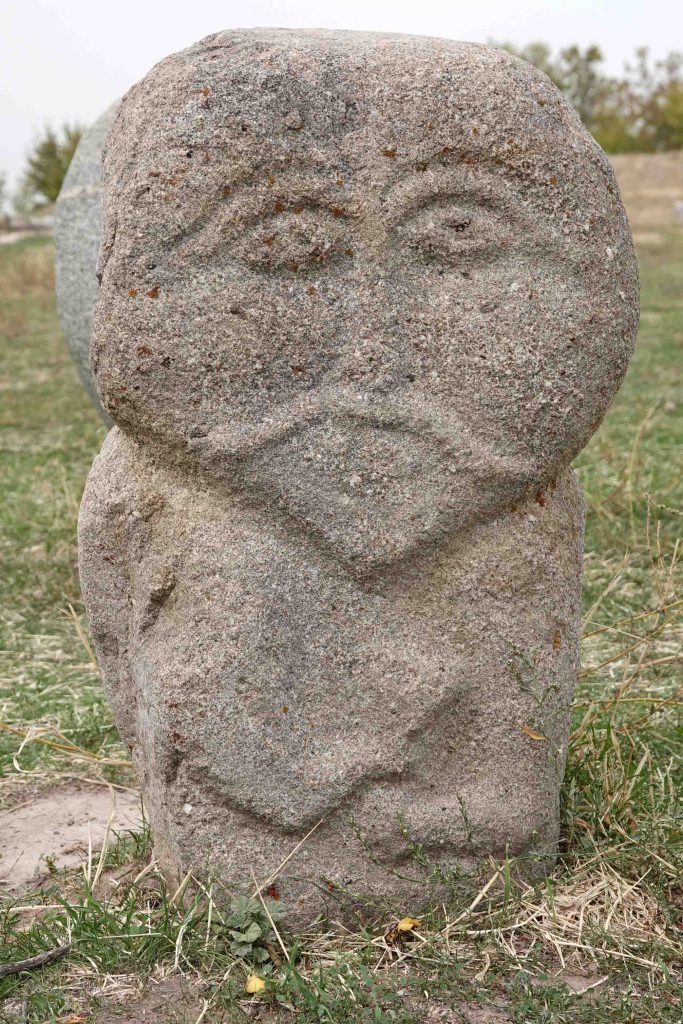
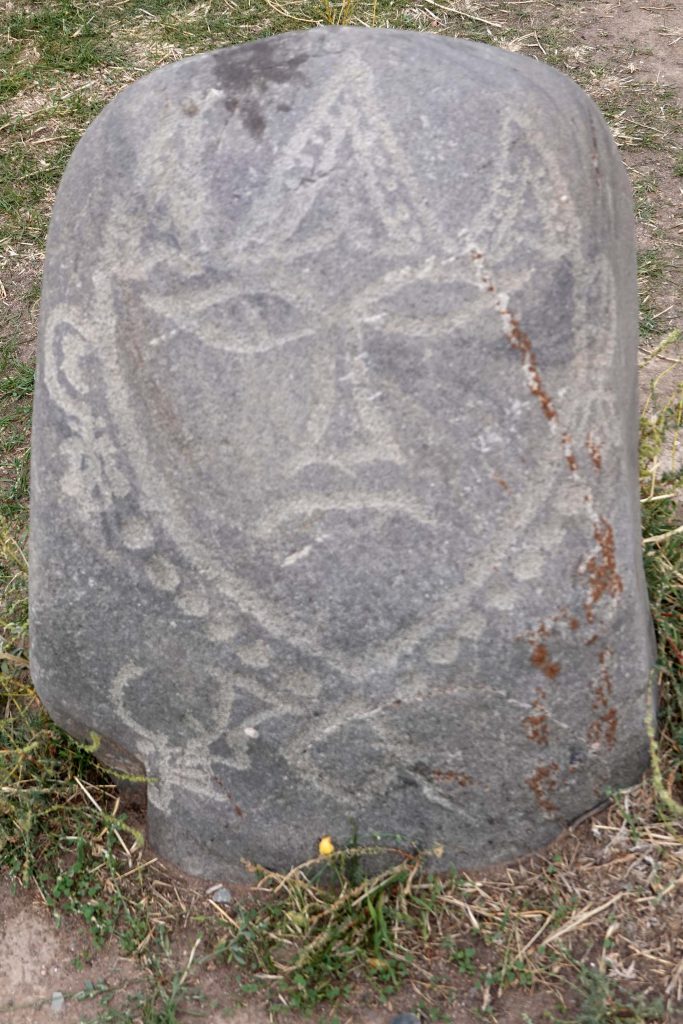
Our evening meal was at a Turkish restaurant and the bread was puffy when it arrived and collapsed like a souffle when we stuck a knife in it. Great flavor and texture.
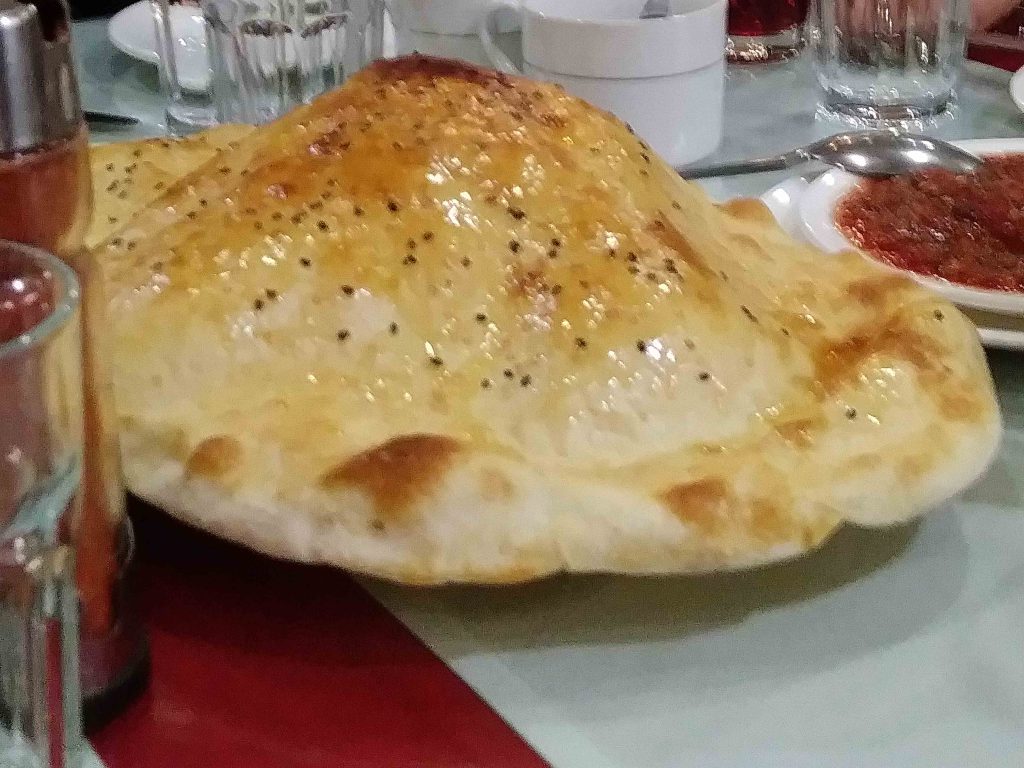
Bishek: Day trip to Al Archa Park -Sept. 24
Enjoy either an easy or strenuous hike at Al Archa Park, with snow-capped peaks reaching 9200 feet (2,800 meters). In the afternoon, we will enjoy a city walking tour of Bishkek’s historic buildings. Overnight: Golden Dragon Hotel, Bishkek.
From the long drive yesterday, my knee was swollen and red and my leg down to and including my foot was swollen as well. As today was going to have quite a bit more bus time, I chose not to go, though the walk at Al Archa Park would have been good for it. That really confirmed that flying coach on the trip from Denver would have had me in big trouble for the next couple of days.
After lunch, I went on the walking tour of Bishkek and especially was fascinated by the sculpture, and the story behind it, of the three young men pushing the sculpture apart. It commemorates two uprisings during the transition from Soviet-ruled Kyrgyzstan to independence: the Aksy uprising in 2002 in the southern part of the country and the 2010 uprising in Bishkek when, on 7 April 2010, President Bakiev was ousted, followed by mass riots in which 84 people died and hundreds were injured. Like many photographs, I couldn’t capture the way it felt in person, very powerful and moving.
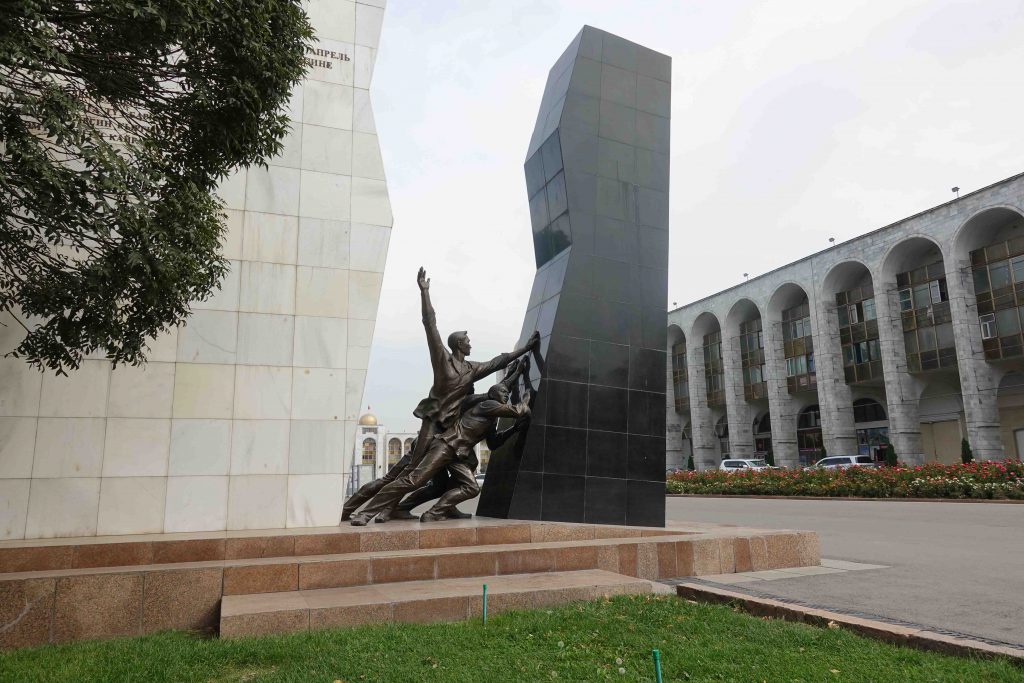
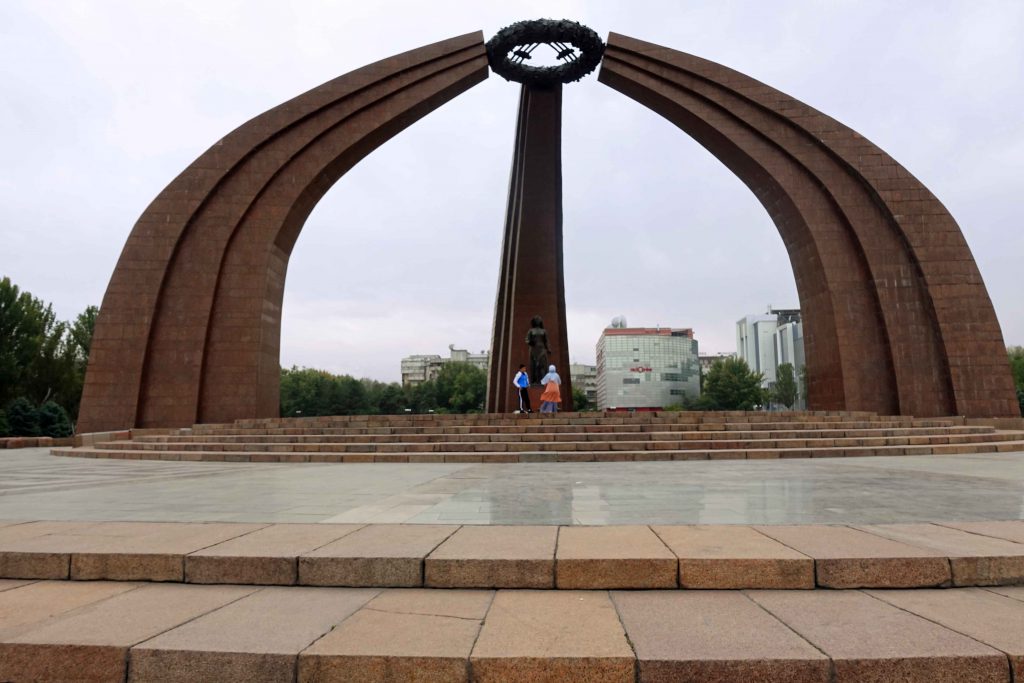
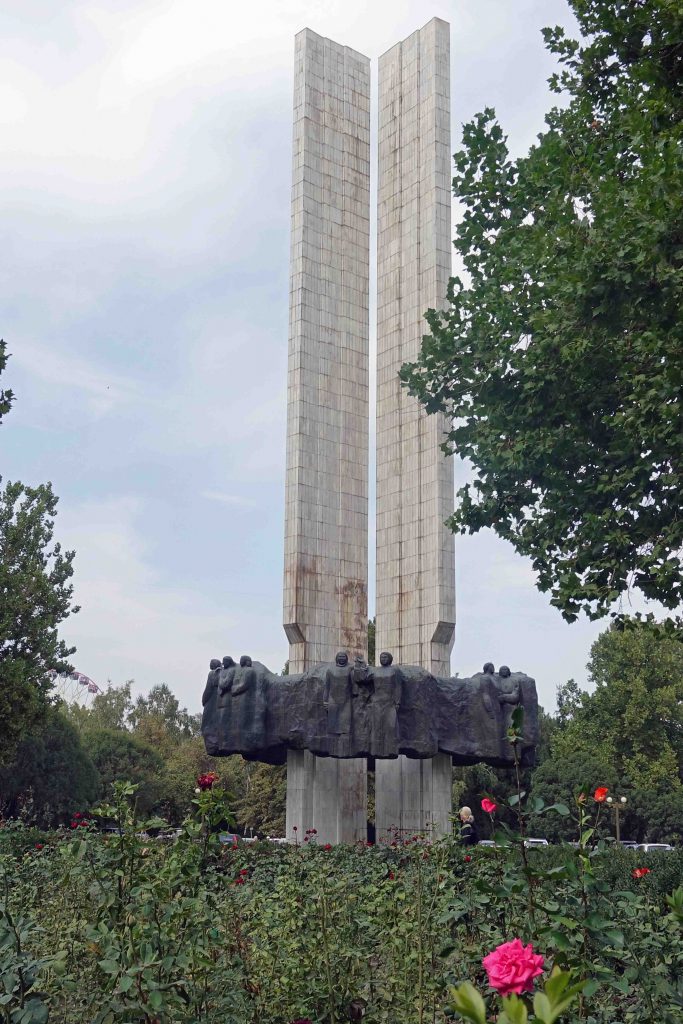
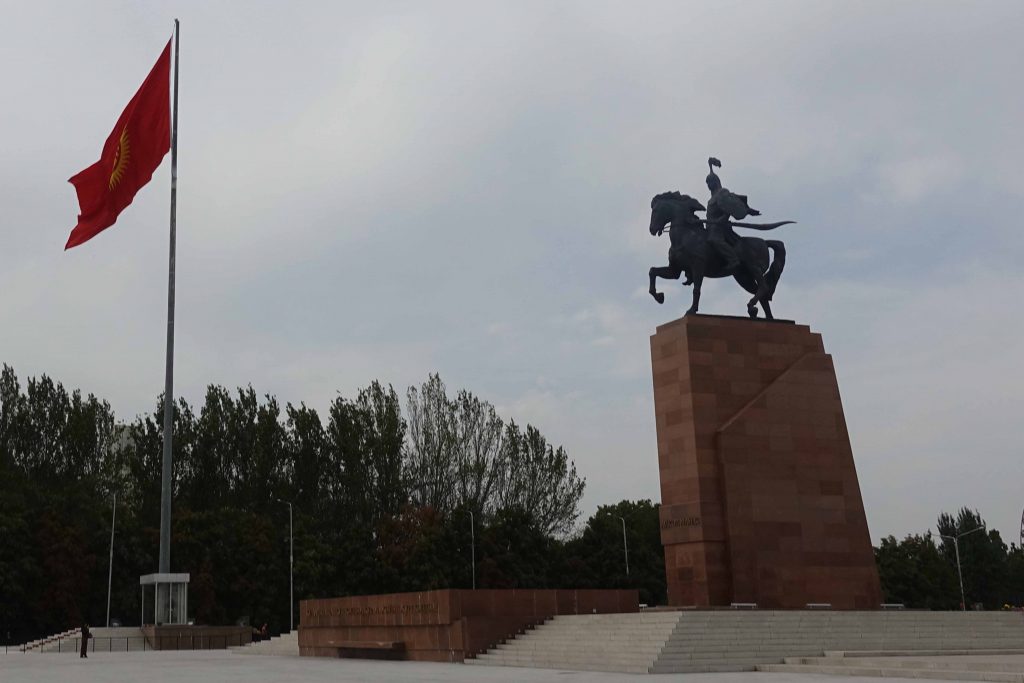
This evening we had a display of silk scarves combined with felt designs on them. Couldn’t tell until handling them that the design was felt, it was so fine. Then dinner. The shrimp in the noodle and chicken dish tonight tasted like shrimp “used to”, sweet and tender. I’d forgotten that taste and why I liked shrimp. The black mushroom soup was outstanding, would happily have that again. Then we were entertained by a group of traditional singers. They seemed to be enjoying themselves as much as we enjoyed listening and looking at them.
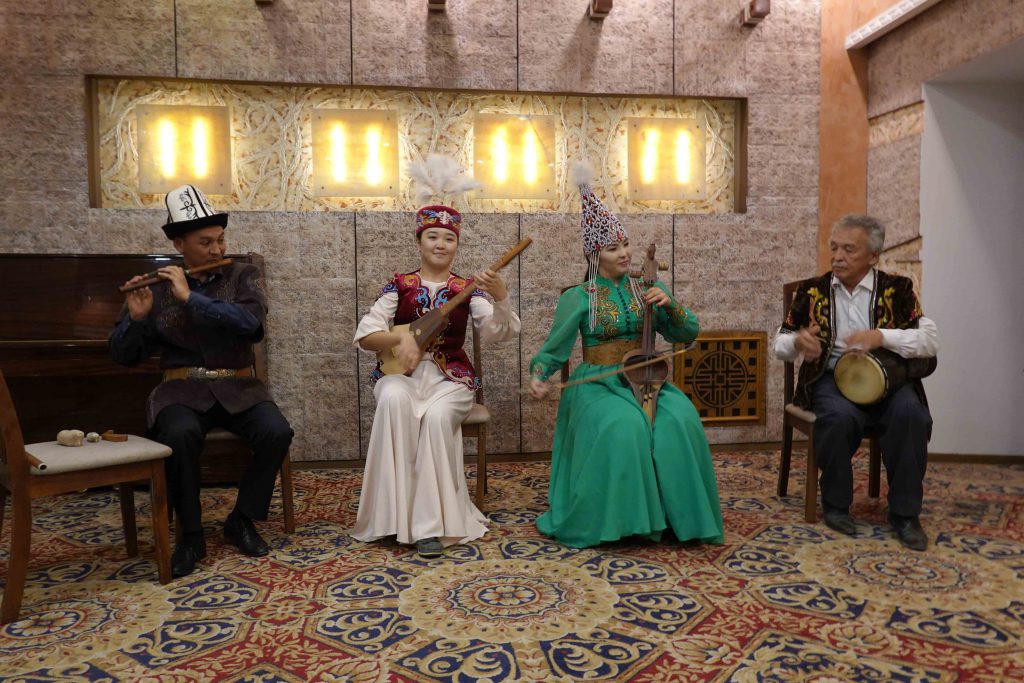
Our hotel is owned by South Koreans and, because of the relationship with North Korea, they are concerned. In the closet they’ve thoughtfully put gas masks for guests to use in case of a chemical/gas attack. Gave me pause. And to remember, even though I was only a child at the time, the gas masks in their little boxes we carried over our shoulder when going out of the house during part of WWII.
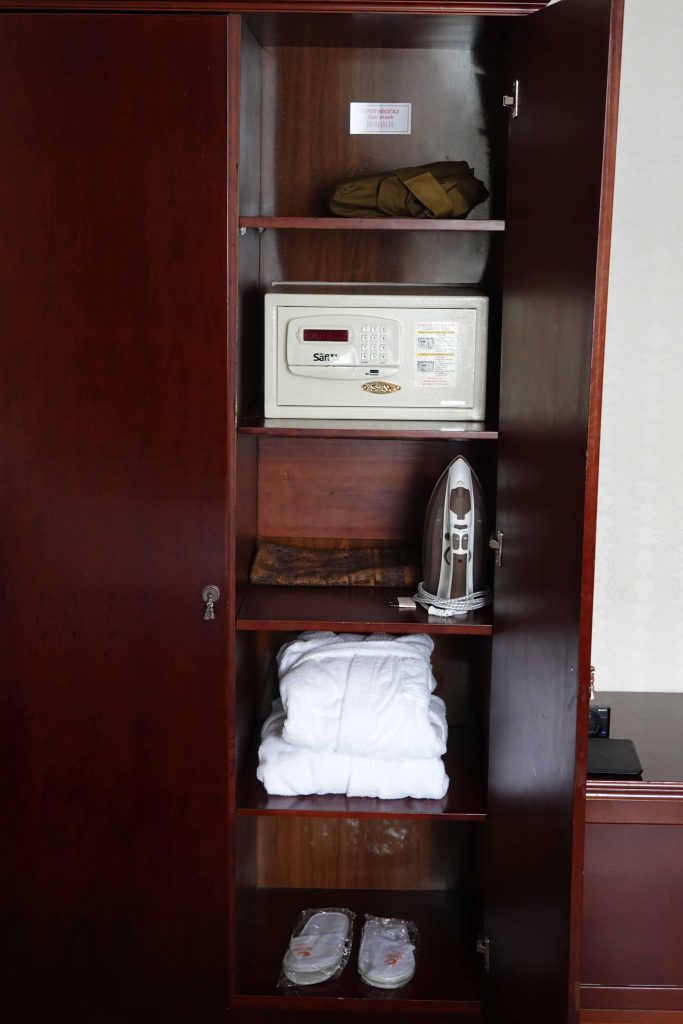
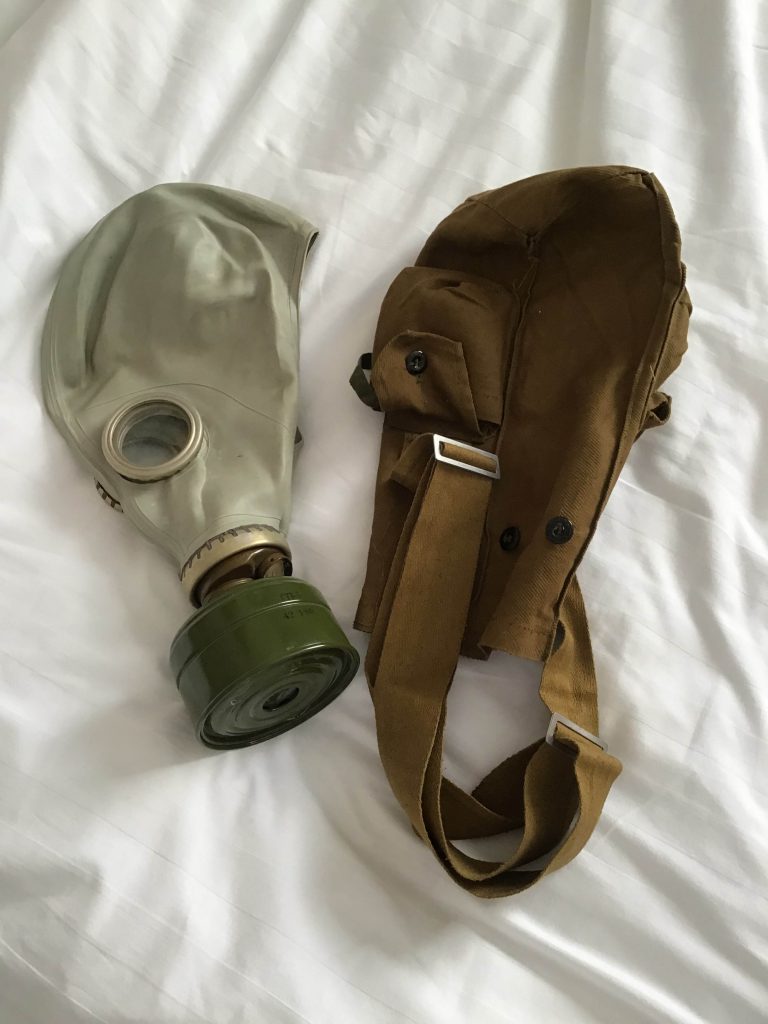
To Osh – Sept. 25
ElderTreks brochure: This morning we will take a very early flight to Osh, the second largest city in Kyrgyzstan, located in the Fergana Valley. Upon arrival we visit the first UNESCO World Heritage site on this trip “Sulaiman – Too Sacred Mountain” revered as a place of worship for over a millennium. In the afternoon we have a complete change of scenery when we visit the Osh Bazaar, one of the largest in Central Asia. Overnight in Osh: Sunrise Guest House
Our flight was changed, yesterday, from an early one until noon. When we arrived outside Manas Airport, 9:45-ish this morning, we were told the airport had been closed for the security of a group of very important diplomats and would be reopened at noon with our flight now rescheduled for 3 p.m.
Ilya knew of a nearby park, we drove there, and Roger arranged with the restaurant staff to make us lunch. Elaine relaxed on a swing while we were waiting; the book she’s holding in this photo is about Central Asia.
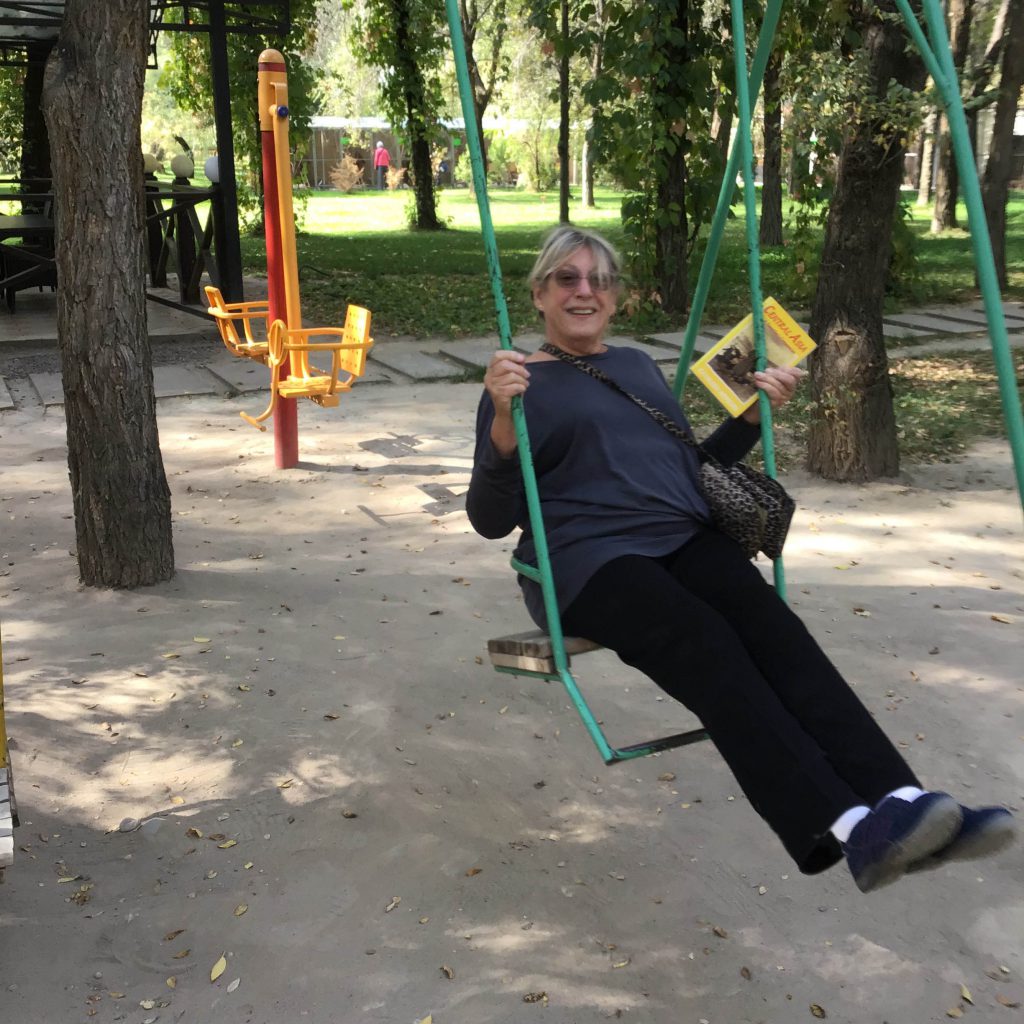
It was a delightful park with a lake, a small aviary, children’s playground, toilets, and a sitting area in front of the cafe, looking out onto the lake. At noon we were served lunch including the best chicken we’ve had on this trip.
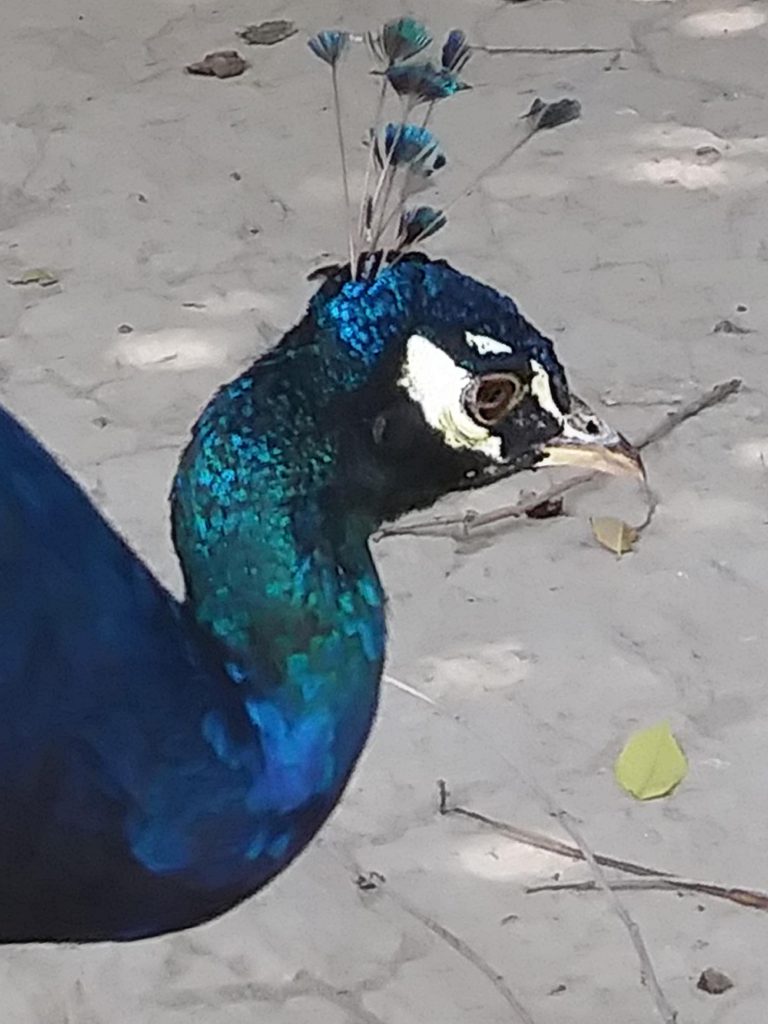
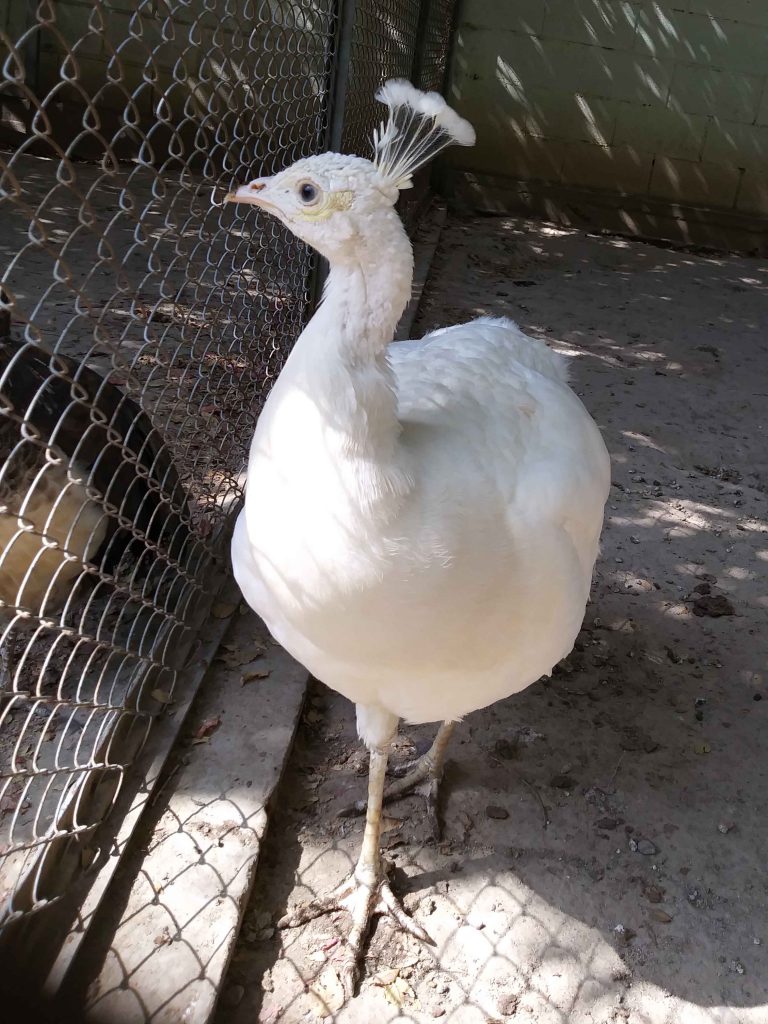
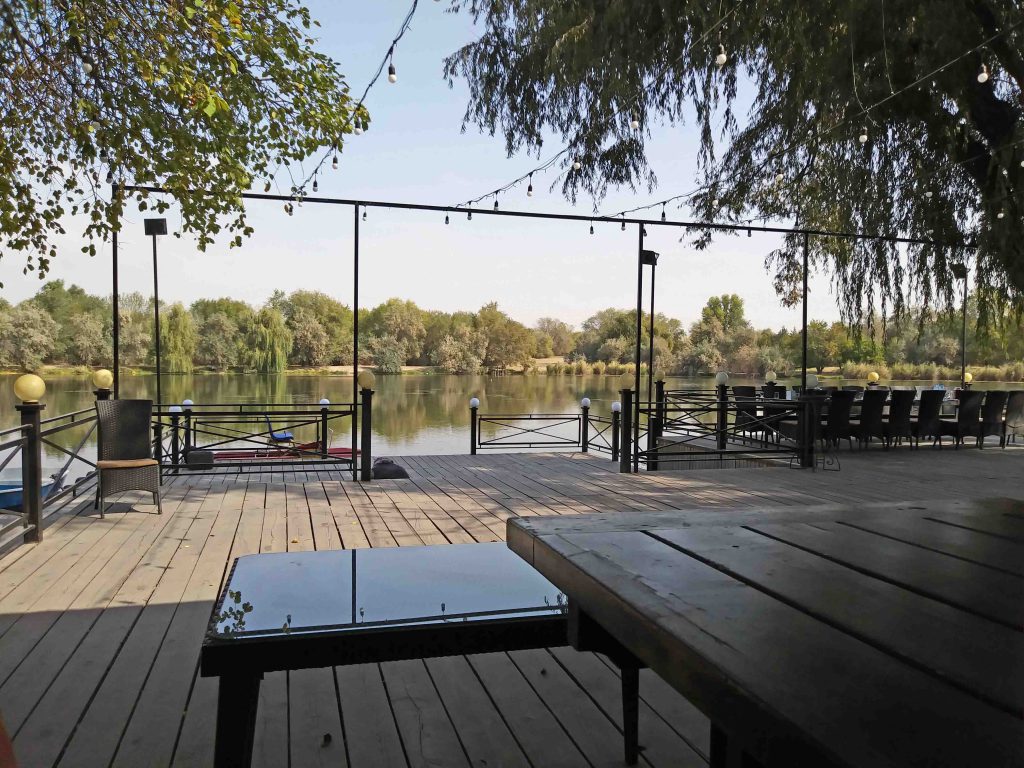
View towards the lake. Our lunch table is to the right, next to the lake.
The name of the restaurant is Uncle Tom’s Cabin. I wonder about the story behind that. The park and lake are privately owned by the restaurant.
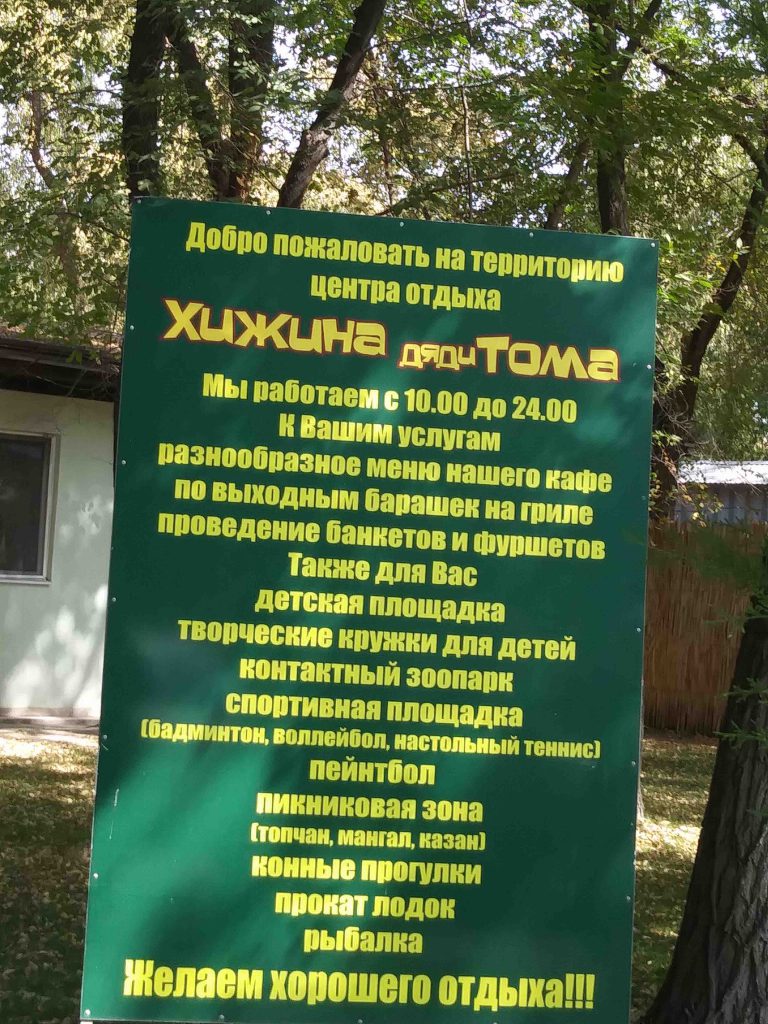
After lunch, we returned to the airport and at 2:15 we were told our flight to Osh had been cancelled. The plane is still in Osh, broken down, and they have no idea when it will be repaired, certainly not today. It’s now 3:45 and Roger has arranged for two Sprinters (small buses) to take us to Osh. It’s a 12-hour or more drive to Osh. He’s now off buying some food for us to eat on the journey to save the hour it would take if we stopped at restaurant along the way. The urgency for us to get to Osh tomorrow is that, mid-morning, we are scheduled to cross the border into Tajikistan.
The Adventure Continues…..
Next page: Tajikistan
Previous page: Kazakhstan
All pages: In Transit : Kazakhstan : Kyrgyzstan : Tajikistan : Uzbekistan : Turkmenistan : Notes after returning home : Q&A, Comments
